Lost Season 2 – music by Michael Giacchino
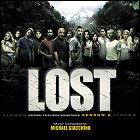 As with the TV series it accompanied, the music of Lost really ramps up the stakes in season two. Where it’s scary, it’s much more boisterous and scary than season 1, and where it’s mysterious, it’s much more mysterious. There are quieter moments too, including the piano piece from what still stands as my favorite episode to date, Everybody Hates Hugo.
As with the TV series it accompanied, the music of Lost really ramps up the stakes in season two. Where it’s scary, it’s much more boisterous and scary than season 1, and where it’s mysterious, it’s much more mysterious. There are quieter moments too, including the piano piece from what still stands as my favorite episode to date, Everybody Hates Hugo.
Definite themes emerge as the chronologically-ordered selection of music unfolds (if indeed any show that has flashbacks every week can be described as chronological), including a theme for the Dharma station hatch, which may also be shared by Desmond. This first appears in “Peace Through Superior Firepower,” the scene which introduced us to Desmond, and later appears in a couple of other tracks, including the moment in last season’s finale when Desmond realized that he brought down Oceanic 815 in the first place.
Michael Giacchino’s instrumentation is more densely layered here, generally lending the whole thing a “bigger” sound. (Like Battlestar Galactica composer Bear McCreary, Giacchino is classy enough to list every session player who participated in the Lost sessions – and lo and behind, many of them are the same musicians. What a great job that must be, playing all that killer music.) Somehow that fits because, obviously, the story is getting bigger too.
One of the most interesting tracks is the show’s end credits. (“Wha…?”, I hear you saying already, “there isn’t music on the end credits because ABC squishes everything and runs previews.”) I’m guessing this is the end credit music for the un-squished credits on the DVDs. It’s interesting, and it defnitely has the same “Lost sound” as the score cues, but it’s almost too upbeat.
Some fans may not be thrilled with how much music is heard from specific episodes; some shows – quite pivotal ones in the Lost mythos, in fact – wind up represented by only one track or don’t appear at all, while others (I’m looking at you, Live Together, Die Alone) seem like most of the music written for them is here. It’s a nice listen from beginning to end, but with shows like this, Galactica and Doctor Who, the track listing seems like it’s bursting to expand beyond the running time of a single CD.
Those looking for songs featured in the show go away empty-handed again; I’m not saying that I don’t like having an entire CD of underscore, but with non-score material like Driveshaft, and prominently heard songs  like Mama Cass Elliot’s “Make Your Own Kind Of Music,” you’d think someone would’ve put together an official “Songs heard on Lost” compilation by now.
like Mama Cass Elliot’s “Make Your Own Kind Of Music,” you’d think someone would’ve put together an official “Songs heard on Lost” compilation by now.
It’s a tremendously enjoyable and relentlessly intense listen, and that’s why Lost Season 2 was one of my favorite soundtracks of 2006, hands-down.

- Main Title (0:17)
- Peace Through Superior Firepower (1:26)
- The Final Countdown (5:49)
- World’s Worst Landscaping (1:18)
- Mess It All Up (1:28)
- Hurley’s Handouts (4:42)
- Just Another Day On The Beach (2:49)
- Ana Cries (1:47)
- The Tribes Merge (2:05)
- The Gathering (4:19)
- Shannon’s Funeral (2:12)
- All’s Forgiven…Except Charlie (5:19)
- Charlie’s Dream (1:50)
- Charlie’s Temptation (0:51)
- A New Trade (2:40)
- Mapquest (0:38)
- Claire’s Escape (3:45)
- The Last To Know (2:22)
- Rose And Bernard (2:40)
- Toxic Avenger (0:41)
- I Crashed Your Plane, Brotha (1:46)
- Eko Blaster (1:44)
- The Hunt (3:57)
- McGale’s Navy (2:21)
- Bon Voyage, Traitor (5:30)
- End Title (0:32)
Released by: Varese Sarabande
Release date: 2006
Total running time: 64:48
Electric Light Orchestra – On The Third Day (remaster)
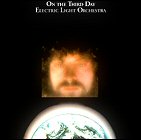 With any slate of back catalogue reissues, you’re already running the risk of the consumer saying “been there, done that.” But it takes talent to achieve the same effect when it comes to the added-value bonus material. Maybe that’s a little unfair; as with the other ELO remasters to date, 1973’s On The Third Day has never sounded better. The apocalyptic-sounding fusion of strings and the closest ELO ever came to heavy metal positively sparkles, and the liner notes finally give a little bit of insight into the making of the album; with its bizarre, quasi-Biblical themes, Third Day has never ceased to fascinate me. It’s territory ELO hadn’t ventured into before, and never ventured into again.
With any slate of back catalogue reissues, you’re already running the risk of the consumer saying “been there, done that.” But it takes talent to achieve the same effect when it comes to the added-value bonus material. Maybe that’s a little unfair; as with the other ELO remasters to date, 1973’s On The Third Day has never sounded better. The apocalyptic-sounding fusion of strings and the closest ELO ever came to heavy metal positively sparkles, and the liner notes finally give a little bit of insight into the making of the album; with its bizarre, quasi-Biblical themes, Third Day has never ceased to fascinate me. It’s territory ELO hadn’t ventured into before, and never ventured into again.
Now here’s the problem: like a great many other things covered on this site, ELO has a strong cult following. Its fans snatch up any release that holds the promise of previously unheard material from any era of the group’s classic repertoire. This isn’t really a problem until you realize that almost all of the “bonus tracks” attached to this re-release have been heard before. The various early takes and mixes of “Ma-Ma-Ma Belle” and “Dreaming Of 4000” were included on the 2-disc UK reissue of Electric Light Orchestra II (and, before that, on an early 90s compilation called Early ELO), and so too was the previously unreleased (and still very Dylanesque) song “Everyone’s Born To Die”. The emonly really “new” track here is a wild track of various orchestral interludes which were eventually mixed in between songs on the original album – so it’s not that you haven’t heard them before, you just haven’t heard them on their own.
 It’s not a total disappointment, since not everyone will have gotten that UK import (and since those bonus tracks didn’t show up on the North American version of the ELO II remaster), but aside from some nice liner notes and a sharper sound, hardcore ELO fans won’t find much new here that they haven’t heard already.
It’s not a total disappointment, since not everyone will have gotten that UK import (and since those bonus tracks didn’t show up on the North American version of the ELO II remaster), but aside from some nice liner notes and a sharper sound, hardcore ELO fans won’t find much new here that they haven’t heard already.
- Ocean Breakup / King Of The Universe (4:07)
- Bluebird Is Dead (4:42)
- Oh No, Not Susan (3:07)
- New World Rising / Ocean Breakup Reprise (4:05)
- Showdown (4:09)
- Daybreaker (3:51)
- Ma-Ma-Ma Belle (3:56)
- Dreaming Of 4000 (5:04)
- In The Hall Of The Mountain King (6:37)
- Auntie (Ma-Ma-Ma Belle Take 1) (1:19)
- Auntie (Ma-Ma-Ma Belle Take 2) (4:05)
- Mambo (Dreaming Of 4000 alternate mix) (5:05)
- Everyone’s Born To Die (3:43)
- Interludes (3:40)
Released by: Epic / Legacy
Release date: 2006 (originally released in 1973)
Total running time: 57:30
Lindsey Buckingham – Under The Skin
 Picking up work on a late ’90s solo album where he left off – originally, the album was called A Gift Of Screws and would’ve been a follow-up released only a few years after Out Of The Cradle – Lindsey Buckingham goes into territory that quite a few of his loyal fans will find unfamiliar: the music is stripped down to its bare essentials, sometimes almost all-acoustic, without the trademark elaborate studio production which became the trademark of his early work and his heyday with Fleetwood Mac. But there’s something just as elaborate about Under The Skin, though instead of studio trickery, what’s elaborate here is Buckingham’s sheer staggering musicianship.
Picking up work on a late ’90s solo album where he left off – originally, the album was called A Gift Of Screws and would’ve been a follow-up released only a few years after Out Of The Cradle – Lindsey Buckingham goes into territory that quite a few of his loyal fans will find unfamiliar: the music is stripped down to its bare essentials, sometimes almost all-acoustic, without the trademark elaborate studio production which became the trademark of his early work and his heyday with Fleetwood Mac. But there’s something just as elaborate about Under The Skin, though instead of studio trickery, what’s elaborate here is Buckingham’s sheer staggering musicianship.
The instrumentation is sparse, often consisting of layers of guitar (usually acoustic, though some electric work does sneak in here and there), simple percussion, and half-whispered, half-sung vocals. Vocals are often layered in and overdubbed, but the overall effect is deceptive – you think it’s a bit quieter than the fall-on rock songs Buckingham has given us in the past, but instead he’s almost forcing you to concentrate on the songs.
The songs are great this time around. When Out Of The Cradle was first released, I complained that Buckingham had charged us full “new album” price for an album that contained an awful lot of material that seemed like reheated Fleetwood Mac. This time around, he’s lived up to the songwriting chops that brought us rock classics like “Trouble” and “Go Your Own Way,” though where some of his past work sounded like songs that didn’t make it onto a Mac album, here they’re presented in a context where it’s hard to imagine a full-band sound on them. (Ironically, John McVie and Mick Fleetwood do actually play on “Down On Rodeo,” the Fleetwoodiest song of the bunch here; some of the Gift Of Screws songs were lifted from that project and handed over to Fleetwood Mac’s Say You Will, in some cases with minimal contributions from the other band members, and the tracks in question here may have been contenders for that album.)
The highlights include the Rolling Stones cover “I Am Waiting,” and the Buckingham originals “It Was You,” “Under The Skin” and “Cast Away Dreams” (let’s back up a little bit – for a renowned songwriter like Lindsey Buckingham, it really is unusual to hear a cover of someome else’s material). There’s another cover, Donovan’s “To Try For The Sun,” but it just doesn’t grab me despite being a nice enough song.
For those who aren’t grabbed by any of this material, and for some it may represent one stylistic  shift too far away from Buckingham’s full-blast rock sound, an album leaning more in that direction is promised for sometime in 2007 – that is, unless one remembers that every other solo project that Buckingham announces winds up becoming a Fleetwood Mac album. Only time, and the apparently irresistible lure of Stevie Nicks, will tell.
shift too far away from Buckingham’s full-blast rock sound, an album leaning more in that direction is promised for sometime in 2007 – that is, unless one remembers that every other solo project that Buckingham announces winds up becoming a Fleetwood Mac album. Only time, and the apparently irresistible lure of Stevie Nicks, will tell.

- Not Too Late (4:42)
- Show You How (4:22)
- Under The Skin (3:57)
- I Am Waiting (3:34)
- It Was You (2:49)
- To Try For The Sun (3:14)
- Cast Away Dreams (4:28)
- Shut Us Down (3:57)
- Down On Rodeo (4:27)
- Something’s Gotta Change Your Mind (4:48)
- Flying Down Juniper (4:43)
Released by: Reprise
Release date: 2006
Total running time: 45:01
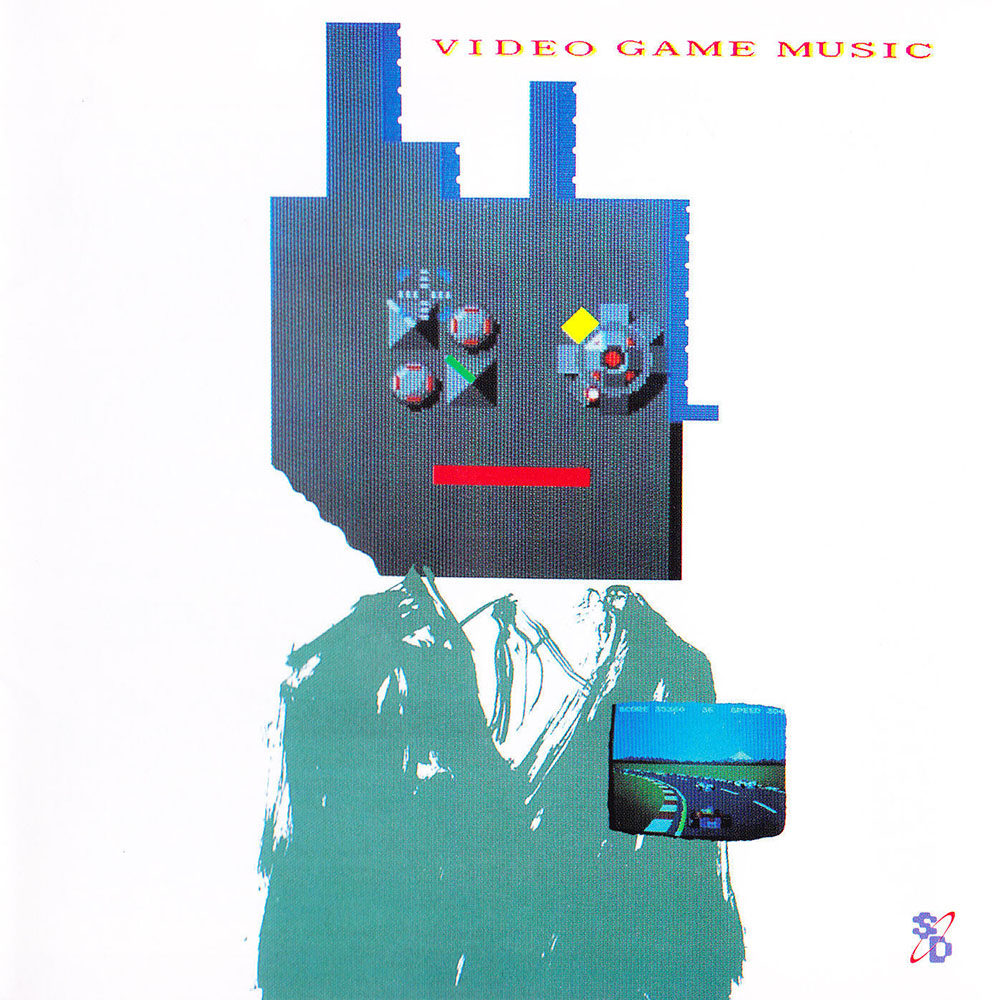
Namco Video Game Music
 Even though we now live in an age where ringtones outstrip them with actual sampled sounds, I’ve always thought the bite-sized video game music cues of yesteryear were really catchy in their own hypnotic way. Granted, they weren’t exactly great music in cases, and some of them weren’t even particularly complex – but with repeat exposure, they had a way of lodging themsselves in my brain all the same.
Even though we now live in an age where ringtones outstrip them with actual sampled sounds, I’ve always thought the bite-sized video game music cues of yesteryear were really catchy in their own hypnotic way. Granted, they weren’t exactly great music in cases, and some of them weren’t even particularly complex – but with repeat exposure, they had a way of lodging themsselves in my brain all the same.
Namco Video Game Music is a CD that gives you a chance to hear those sounds away from the games that inspired them. In come cases, that’s brilliant, while in others, it comes across as little more than a sound effects disc for serious retrogaming enthusiasts. It’s hard to take it to task too much, however, for this is a CD pressing of one of the very earliest releases of video game music in the world, having originally appeared on vinyl in Japan around 1986.
There’s a decent balance struck here between popular games whose sounds everybody will recognize, and obscure, less obvious titles. Phozon and Libble Rabble never even made it to North American arcades, but they each boast some outstanding pieces of intricate music. On the other hand, as familiar and popular as Pac-Man is, it really only has a couple of pieces of music; much of its track is taken up by the sound of the game being played. You could hook up any machine running Namco Museum to your stereo and get much the same effect.
Other games have great music that are a little bit buried behind sound effects. When the Pole Position track finally got to the end of its “sound effects” section and started playing the game’s numerous post-game ditties in a row, I found that I remembered each one of them well (and while I’m sure some would say “well, that’s because you’ve been playing it nonstop for 24 years!”, I don’t really go reaching for a Pole Position fix that often – the music is, in fact, that catchy).
The first and final tracks, however, are the real bonus fruit at the end of the round. The track devoted to Xevious kicks off with a wonderfully authentic arcade soundscape, with the sound of that game front and center in the mix. Gradually, though, it segues into something else: the repetitive Xevious background tune becomes the backdrop for an Art Of Noise-esque collage of samples from the game, carefully arranged to provide their own beat. Given the original release date of this album, and the fact that Art Of Noise was only just catching on at the time in its original form, this means Namco Video Game Music was way ahead of its time.
The final track kicks off with what sounds like a Galaga audio chip test, cycling through all of the possible sounds and musical interludes that the game contains, until it settles upon the almost hypnotic post-game tune that accompanies your final score and hit ratio statistics. Again, new instrumentation is gradually added to the mix, with not-quite-lounge-style organs expanding on and developing that tune until it’s actually upbeat and relaxing. Given the way that the sparse music from these two games is developed into music that stands on its own, it’s really a shame that the rest of the album wasn’t along the same lines.
is gradually added to the mix, with not-quite-lounge-style organs expanding on and developing that tune until it’s actually upbeat and relaxing. Given the way that the sparse music from these two games is developed into music that stands on its own, it’s really a shame that the rest of the album wasn’t along the same lines.
- Xevious (6:15)
- Bosconian (0:15)
- Pac-Man (2:57)
- Phozon (2:12)
- Mappy (3:36)
- Libble Rabble (3:35)
- Pole Position (2:43)
- New Rally-X (3:11)
- Dig Dug (1:30)
- Galaga (4:23)
Released by: Scitron Digital
Release date: 2003 (originally released in 1986)
Total running time: 30:37
Hot Butter – Popcorn
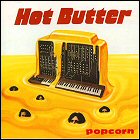 A novelty for the early 1970s, Hot Butter helped to drag electronically generated music into the American mainstream. Actually the brainchild of session keyboard player Stan Free, who had played on albums and on stage for numerous other artists, Hot Butter had to ease its listeners into the concept of music generated by machine by doing covers of familiar tunes, including the one that actually made it onto the charts, a cover of an obscure instrumental called “Popcorn”.
A novelty for the early 1970s, Hot Butter helped to drag electronically generated music into the American mainstream. Actually the brainchild of session keyboard player Stan Free, who had played on albums and on stage for numerous other artists, Hot Butter had to ease its listeners into the concept of music generated by machine by doing covers of familiar tunes, including the one that actually made it onto the charts, a cover of an obscure instrumental called “Popcorn”.
The novelty of it all is that, where the British and European listening public had been getting a steady indoctrination of electronic music via the BBC Radiophonic Workshop and other sources for years, often with a psychedelic connotation, the American public wasn’t yet on that same IV drip of music made with machines. There are wavering bass and melody lines in Hot Butter’s songs that simply couldn’t be performed, with the degree of consistency and accuracy heard here, by a human being. To smooth the shock of the new, there are some “real” instruments in the mix, usually drums.
Some of the best pieces here were echoplexed ’60s instrumentals – “Telstar” and “Apache” – that lent themselves well to the Hot Butter treatment. Other fairly well known songs also adapt easily to Hot Butter’s style, though nothing is as surprising as “Amazing Grace”, played bagpipes-style by synthesizers. That synths were at the core of the music was amazing enough at the time; that they were taking the place of an easily recognizable instrument in an almost universally-well-known arrangement was just another shock treatment,  and it works wonderfully.
and it works wonderfully.
Though always intended to be a novelty act, Hot Butter may have had some life in it yet, and it’s a bit sad, after hearing Free’s virtuosity here, that the Butter didn’t keep simmering, leaving this act a bona fide one-hit wonder.

- Popcorn (2:34)
- Day By Day (3:49)
- Apache (2:53)
- At The Movies (2:34)
- Tristana (3:29)
- Song Sung Blue (3:36)
- Telstar (2:26)
- Tomatoes (2:21)
- Amazing Grace (2:58)
- Love At First Sight (2:58)
- Song Of The Nairobi Trio (2:16)
- The Silent Screen (2:12)
- Mah-Na-Mah-Na (1:51)
- Masterpiece (2:18)
- Percolator (1:59)
- Skokiaan (2:12)
- Slag Solution (2:28)
- Sounds (3:13)
- Space Walk (2:52)
- Syncopated Clock (2:16)
- Tequila (1:49)
- Wheels (1:54)
Released by: Castle
Release date: 2000
Total running time: 56:58
Royksopp – Royksopp’s Night Out
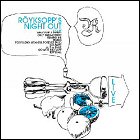 I’m generally not a huge fan of live albums – why bother, when studio albums deliver the meat and potatoes minus the screaming? – but every once in a while I’m either enthusiastic or curious enough about a specific act to go ahead and check out a concert recording. I was a little bit skeptical going into Royksopp’s Night Out, simply because Royksopp relies so heavily on technology, sampling and other studio techniques to create their sound – could they deliver the goods without that at their disposal?
I’m generally not a huge fan of live albums – why bother, when studio albums deliver the meat and potatoes minus the screaming? – but every once in a while I’m either enthusiastic or curious enough about a specific act to go ahead and check out a concert recording. I was a little bit skeptical going into Royksopp’s Night Out, simply because Royksopp relies so heavily on technology, sampling and other studio techniques to create their sound – could they deliver the goods without that at their disposal?
The answer turns out to be a resounding yes. Things are energized considerably by getting a touring group together to bring the previously sampled drums, guitars and other instruments to life. There’s still plenty of technology on display, but in some cases the live performance actually obscures things less than the studio recordings: “What More Is There?”, to name just one example, finally reveals its somewhat bizarre lyrics clearly. (The flipside of that is that it seems like only half of the lyrics of “Sparks”, the lovely torchy number from Royksopp’s first album, are ever sung on stage.)
With its short running time, Royksopp’s Night Out hangs somewhere in the balance between EP and full album, and yet depending on where you look, it commands a full album price tag; that probably makes this collection something for the diehards only. But even if you think you’ve heard Royksopp before, this intriguing live recording reveals new layers and new energy by getting everyone out of the studio – in short, it’s exactly what a concert recording should be.

- What Else Is There? (3:19)
- Only This Moment (4:04)
- Remind Me (3:47)
- Sparks (5:09)
- Poor Leno (Istanbul Forever Take) (5:24)
- Go Away (5:35)
- Alpha Male (8:03)
- Go With The Flow (3:13)
- Teppefall (0:58)
Released by: Astralwerks
Release date: 2006
Total running time: 39:32
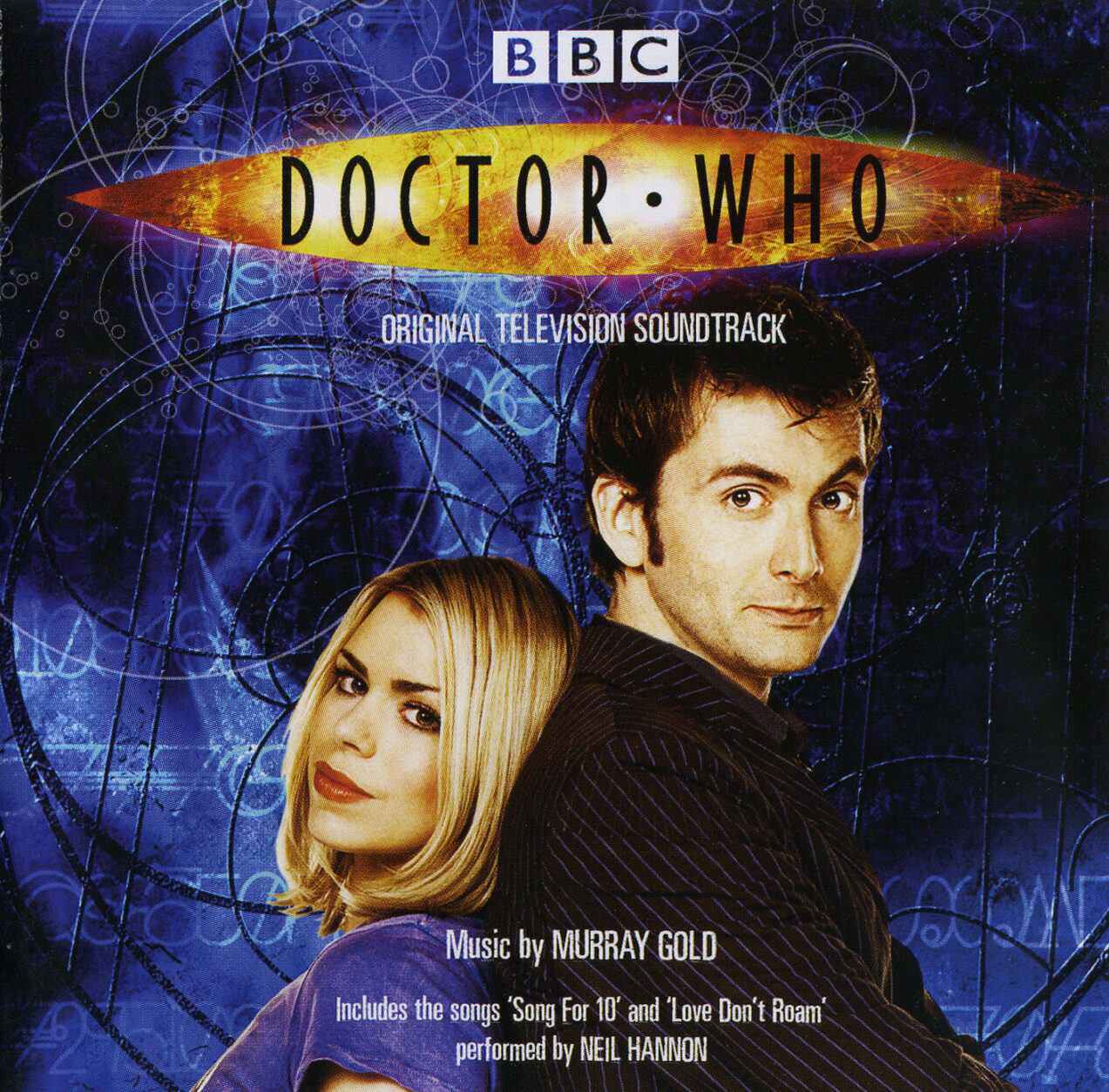
Doctor Who – music by Murray Gold
After months of requests, demands, and probably everything short of threats of unpleasant acts from the fans, the soundtrack from the new Doctor Who series is here at last. Held up initially by a sweeping reorganization of the BBC’s in-house media divisions (a reorganization that has virtually shut down BBC Music, which had been releasing a series of CDs of music and effects from the series created by the now-defunct BBC Radiophonic Workshop, and has also seen BBC’s video division now farming out DVD publishing to a company called 2Entertain), the soundtrack was finally licensed to Silva Screen, a UK indie soundtrack label which released the first-ever complete recordings of Doctor Who scores in the early 90s.
The CD that has finally landed in the players of fans everywhere is a compilation of music from both of the new show’s first two seasons on the air, as well as both of its Christmas special episodes to date. It’s an impressive sampling that virtually fills the CD and only omits a few of the series’ 27 episodes (at the time of its release) from being represented on the track list. In case you haven’t been watching/listening, this isn’t the Doctor Who music of the 60s and 70s; the evocative but sparse chamber-style music of Dudley Simpson’s 70s reign and the occasional experiments with purely electronic music of the 60s have given way to something more akin to the 1996 TV movie. For the new series’ first season, composer Murray Gold (who also worked with producer Russell T. Davies on Casanova and The Second Coming, among other projects) did what John Debney, Louis Febre and John Sponsler did in 1996: fell back on synths and samples to produce an orchestral-sounding score. With the 2005 Christmas special, Gold brought things full-circle, bringing real, acoustically-recorded orchestral instruments into the mix.
In a few cases, the recordings here split the difference between the original synth-posing-as-orchestra versions and the later revised versions of the same cues with real instruments. The first track after the obligatory opening theme music is an example of this – “Westminster Bridge” is the music that opened the series in the very first episode; it was also rerecorded a year later for New Earth with twangy bass guitar that almost evokes the James Bond theme. On CD, “Westminster Bridge” opens Rose-style, and then gradually segues into the New Earth version. That’s a nifty way of satisfying sharp-eared listeners who might prefer one version or the other.
In many cases, the music from the new series of Doctor Who is reused in later episodes, almost as library music a la the original Star Trek. Many of the tracks here are frequent flyers in the show; for instance, I love the “Tooth And Claw” track, though aside from the killer percussive opening from that episode’s teaser (flying monks!), I remembered that music more for featuring in The Satan Pit. The Cybermen’s music reappears in Army Of Ghosts and Doomsday. And then, of course, there are “Rose’s Theme” and “Harriet Jones, Prime Minister,” which, while they’re both lovely pieces of music (and I enjoy listening to them on their own merits), became overused within the context of the series itself. Every time Billie Piper’s lower lip started quivering, you could bet there was a “Rose’s Theme” coming on just any second. If you felt that any given piece of music was heard too often on TV, chances are you’ll find that piece on this CD.
There are also plenty of stand-alone scores, and these are even referred to in the detailed track-by-track liner notes by Murray Gold himself. Episodes such as The Girl In The Fireplace and Bad Wolf have their own unique sound, and I’m glad they’re included. There’s a theme for UNIT (the military organization with whom the Doctor worked in the 1970s) which has, much like the organization itself, been retired from use on the show, and it almost sounds like something from the equally wonderful music from Torchwood, though I’m baffled as to why it cuts off with all the subtlety of someone hitting “stop” on the CD, without even a hint of fading out. (I’m also a bit disappointed that School Reunion isn’t represented here, since it had some smashing, end-of-the-world choral music, as well as some interesting cues built around “Song For Ten.”)
Ah yes, lest we forget, there are two actual songs with lyrics here, and they’re not “Toxic” or “Tainted Love.” Both sung by Neil Hannon, “Song For Ten” and “Love Don’t Roam” are original, specially-composed songs from, respectively, the 2005 and 2006 Christmas special episodes (the latter of which had yet to even air at the time of the CD’s release). Normally I’d be shaking my head at the thought of a “teaser track” filling space that could’ve been occupied by some School Reunion music, but “Love Don’t Roam” is so damned catchy that it gets a free pass.
“Song For Ten,” on the other hand, isn’t quite the same as we first heard it. For one thing, Tim Phillips sang on the original version heard toward the end of The Christmas Invasion, and the song wasn’t fully written out to a three-verse, three-chorus pop song structure (it only needed to fill about a minute or so of airtime). That version, fortunately, can be found here (thank you, BBC). The version on this CD loses the wonderfully atmospheric Phil Spector-style production that made it sound like something recorded in the early 70s, not the early 2000s, and has additional lyrics added that allude to the events of Doomsday. I don’t have a beef with the lyrics, though they do suddenly take the song’s original cheerful tone on a big downer, but the changes in the lead vocals and the production style are major issues. I’m growing to like this rendition, but it’s hard for me to regard it as anything but a cover version.
Overall, though, any quibbles I have are minor ones; even since about halfway through season one, I’ve been one of the many eagerly hoping for a soundtrack CD for the new Doctor Who, not just for the sake of being a completist, but because I genuinely like most of the music. Hopefully this CD is the first of many (come on, if Lost and Battlestar Galactica can get one soundtrack CD per season, new Who could do it at least every other season). That decision, ultimately, is up to the consumers. I feel obliged to point out theLogBook.com’s nearly-ten-year-old interview with original series composer Mark Ayres, who spearheaded Silva Screen’s schedule of Doctor Who and related music releases in the early 1990s, and who pointed out in no uncertain terms that piracy put a halt to that schedule, long before the BBC would have pulled the plug in its post-’96-TV-movie reclaiming of all things Doctor Who from outside licensees. While the signs here are encouraging – Doctor Who now tops the ratings in the UK, attracting a large new audience for the CD, and this soundtrack was the #1 iTunes album in the UK when it was released – the playing field has changed significantly too, with the advent of file sharing. My point? If you want more releases like this one (and personally,  I do, and I’d like a side order of Torchwood music if Mr. Gold and Ben Foster wouldn’t mind), buy this CD. I don’t get into sermonizing here because that’s not what you’re here to read, but in this case it’s important enough to mention.
I do, and I’d like a side order of Torchwood music if Mr. Gold and Ben Foster wouldn’t mind), buy this CD. I don’t get into sermonizing here because that’s not what you’re here to read, but in this case it’s important enough to mention.
And the CD is definitely worth the money, too. Every note.

- Doctor Who Theme – TV version (0:41)
- Westminster Bridge (2:08)
- The Doctor’s Theme (1:18)
- Cassandra’s Waltz (3:08)
- Slitheen (1:22)
- Father’s Day (1:55)
- Rose In Peril (1:40)
- Boom Town Suite (3:02)
- I’m Coming To Get You (1:12)
- Hologram (2:15)
- Rose Defeats The Daleks (2:31)
- Clockwork TARDIS (1:18)
- Harriet Jones, Prime Minister (2:13)
- Rose’s Theme (2:14)
- Song For Ten (performed by Neil Hannon) (3:29)
- The Face of Boe (1:16)
- UNIT (1:44)
- Seeking The Doctor (0:44)
- Madame de Pompadour (3:44)
- Tooth and Claw (3:50)
- The Lone Dalek (4:59)
- New Adventures (2:19)
- Finding Jackie (0:54)
- Monster Bossa (1:37)
- The Daleks (3:01)
- The Cybermen (4:32)
- Doomsday (5:09)
- The Impossible Planet (3:11)
- Sycorax Encounter(1:13)
- Love Don’t Roam (performed by Neil Hannon) (3:57)
- Doctor Who Theme – Album Version (2:36)
Released by: Silva Screen
Release date: 2006
Total running time: 75:26
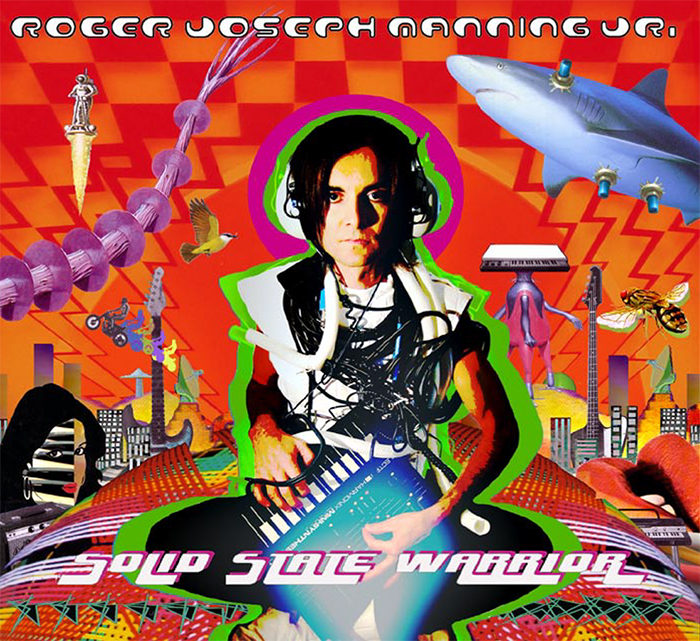
Roger Joseph Manning Jr. – The Land Of Pure Imagination
 Formerly of early 90s power pop powerhouse Jellyfish, Roger Manning is reinventing the 1970s with this solo project, on which he plays and sings everything (except for a trumpet on one song). Fans of 70s music will probably find at several gems to love here, though those expecting to hear the second coming of Jellyfish may be left scratching their heads in places.
Formerly of early 90s power pop powerhouse Jellyfish, Roger Manning is reinventing the 1970s with this solo project, on which he plays and sings everything (except for a trumpet on one song). Fans of 70s music will probably find at several gems to love here, though those expecting to hear the second coming of Jellyfish may be left scratching their heads in places.
In its brief, two-album heyday, Jellyfish mined almost the entire gamut of well-produced, well-written 70s pop music, with stylistic nods to Queen, Supertramp, ELO and numberous other 70s supergroups, and with Manning in the driver’s seat, Jellyfish still managed to make all of those elements the band’s own unique sound. Manning’s chief inspiration is still the 1970s, though here he seems to be absorbing influences from everyone from Mac Davis to Carole King. Fan of Jellyfish’s decidedly rocked-out sound may find it hard to square these elements with what they were expecting. That doesn’t make Imagination a bad album; but for folks like me who were going “Ooh! Roger Manning! Jellyfish!” like I was may require a little bit of an adjustment period while their expectations hash it out with the reality of what’s on the CD.
What’s on the CD is good stuff, though. The title track and especially “Too Late For Us Now,” which I count as my favorite song on the whole album, wouldn’t have been at all out of place in the Jellyfish set list. “Creeple People” and “The Loser” come close to this category as well. “Sandman” hearkens back to the gorgeous a cappella vocal harmonies of Jellyfish’s “Hush,” and “You Were Right” recalls some of that group’s more low-key numbers (i.e. “Calling Sarah”). Manning’s production and vocals are impeccable – even if you don’t care for a given song, it’s almost impossible not to admire his one-man-band abilities here.
But all of that’s pretty cautious praise. There are a couple of songs that I tend to skip – “Wish It Would Rain” resurrects a particularly vapid flavor of 70s pop that was already overused 30 years ago. And while on a conceptual level I like the ornate intricacy of “Appleby,” I just can’t bring myself to really like the song, and I can’t even put a finger on why. The odd thing is that “Appleby” is one of three tracks that were added to the album, to replace three tracks deleted from its Japanese release under the title of Solid State Warrior. The three deleted tracks were made available as a very-limited-edition bonus CD (~200 copies) during  the album’s launch, and all three of the omitted songs are stunners – why anyone thought they didn’t make the cut for consumption in the English-speaking world is a mystery. (“In The Name Of Romance” and “Pray For The Many” are the other two add-on tracks, the latter being the best of the three.)
the album’s launch, and all three of the omitted songs are stunners – why anyone thought they didn’t make the cut for consumption in the English-speaking world is a mystery. (“In The Name Of Romance” and “Pray For The Many” are the other two add-on tracks, the latter being the best of the three.)
Overall, it’s a good album, though it’d be an even better album without the tinkering that went on as it crossed the Pacific.
- The Land Of Pure Imagination (6:01)
- Too Late For Us Now (3:23)
- Wish It Would Rain (5:42)
- The Loser (3:36)
- Sandman (3:37)
- Pray For The Many (3:02)
- Dragonfly (5:19)
- Creeple People (5:31)
- In The Name Of Romance (5:26)
- You Were Right (5:43)
- Appleby (5:30)
Not Lame bonus disc (Solid State Warrior songs omitted in U.S. release):
- What You Don’t Know About The Girl (2:49)
- Sleep Children (2:47)
- ‘Til We Meet Again (3:44)
Released by: Cordless Recordings
Release date: 2006 (originally released in Japan as Solid State Warrior in 2005)
Total running time: 52:55
Tim Finn – Imaginary Kingdom
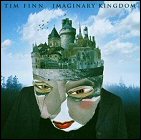 Almost a year after one of its songs (“Winter Light”) made a surprise appearance on the soundtrack from the big-budget, big-screen adaptation of The Lion, The Witch And The Wardrobe, Tim Finn’s new album is here at last, presenting a somewhat more polished and sedate sound than his previous two solo efforts, and yet with hints of some of his past musical endeavours.
Almost a year after one of its songs (“Winter Light”) made a surprise appearance on the soundtrack from the big-budget, big-screen adaptation of The Lion, The Witch And The Wardrobe, Tim Finn’s new album is here at last, presenting a somewhat more polished and sedate sound than his previous two solo efforts, and yet with hints of some of his past musical endeavours.
There are hints of the old Split Enz quirkiness in “So Precious,” hints of Before & After funkiness in “Dead Flowers,” “Horizon” has an almost intangible similarity to the best songs from Big Canoe (and has just a little of the feel of New Radicals’ “You Get What You Give”), “Still The Song” has the feel of his previous two solo albums, and “Couldn’t Be Done” and “Show Yourself” have a little something of the blue-eyed-soul of his very first solo album. That’s not to say that any of these songs are anything less than original and enjoyable; instead, if you’ve liked any of the stylistic stops Tim’s made along his musical career, there’s at least one or two songs on Imaginary Kingdom that will instantly lodge themselves in your head.
There are also songs that are completely different from any of the styles he’s visited before; as I probably mentioned when reviewing the Narnia soundtrack, “Winter Light” is positively lovely and sedate, and “Astounding Moon” has something of the same orchestra-backed feel to it. “Unsinkable” has a quiet, stately feel to it, but even more than that, the lyrics are outstanding, using the sinking of the Titanic (!) as a metaphor for a child’s first realization of his parents’ mortality. That’s not a topic I recall having heard in a lot of pop music before. This is just another example of this album’s depths – there are plenty of layers to peel back, and plenty to enjoy.
 Kudos to co-producer Bobby Huff and engineer/session player John Mark Painter (who happens to be a frequent collaborator with Ben Folds – now there’s someone who I’d pay good money to hear work with Tim in the future) for helping to smooth out the sound of this album; Huff is a surprising name to see here, given that his most recent credit that I can recall is the last Leann Rimes album. Ultimately, though, the music and lyrics are Tim’s babies, and this album is a crop of winners without a single misfire. Tim Finn definitely rules this Imaginary Kingdom.
Kudos to co-producer Bobby Huff and engineer/session player John Mark Painter (who happens to be a frequent collaborator with Ben Folds – now there’s someone who I’d pay good money to hear work with Tim in the future) for helping to smooth out the sound of this album; Huff is a surprising name to see here, given that his most recent credit that I can recall is the last Leann Rimes album. Ultimately, though, the music and lyrics are Tim’s babies, and this album is a crop of winners without a single misfire. Tim Finn definitely rules this Imaginary Kingdom.

- Couldn’t Be Done (2:50)
- Still The Song (2:48)
- Astounding Moon (3:35)
- Midnight Coma (2:52)
- Salt To The Sea (3:45)
- Horizon (3:23)
- Dead Flowers (3:37)
- Resting (Your Hand Lightly) (3:20)
- Show Yourself (3:01)
- Winter Light (4:10)
- So Precious (3:19)
- Unsinkable (2:55)
Released by: Parlophone
Release date: 2006
Total running time: 39:41
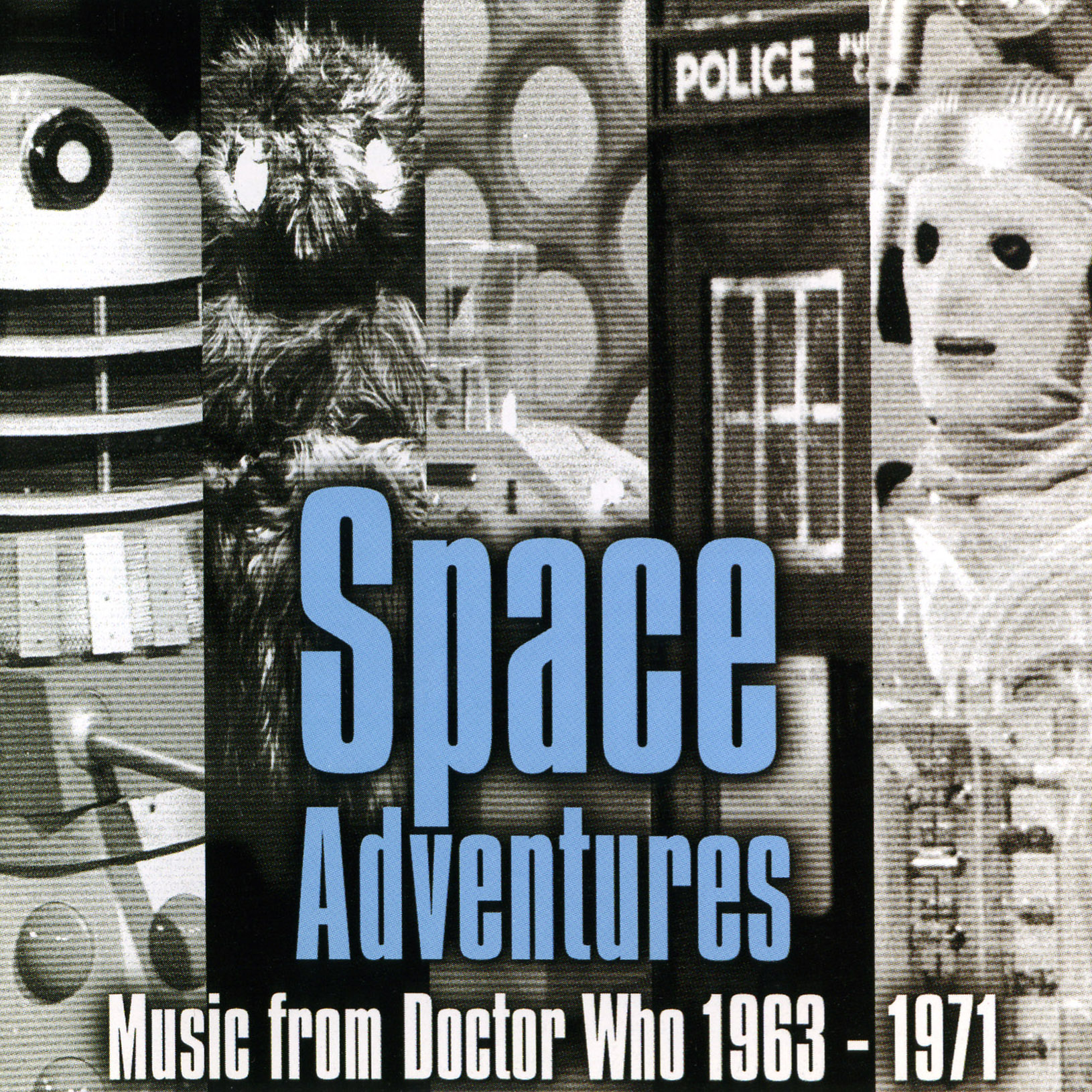
Space Adventures: Music from Doctor Who, 1963-1971
Compiled by Julian Knott, Space Adventures was a very limited-edition release (packaged first as a cassette and later, with bonus tracks, as a CD) compiling stock library music tracks from various sources that were used in the early years of Doctor Who. For a variety of reasons – budget being a frequent one – library music was often used in the show’s black & white days, simply because it was cheaper to pay for a needle drop on a stock music record than it was to have an original score composed. And while this may sound like a cheap way out today, several of these cues are now as indelibly associated with the Doctor’s journeys as any piece of specially composed incidental music that was ever created for the show.
Some time back, I reviewed a CD released to coincide with The Tenth Planet, containing several stock music cues that became a sonic signature for the sinister Cybermen. Space Adventures (which actually takes its title from the very same piece of music that accompanied the Cybermen’s early appearances) was the first public premiere of that work, and apparently it was no easy task. Music libraries, if they want to stay in business where paying clients are concerned, have to evolve with the times, creating newer, more modern pieces of music to offer and retiring older ones whose styles have fallen out of use. Such was the case with the various music libraries from which theese tracks were culled: with no demand for their more distinctly 60s-flavored tunes, the companies put the master tapes away in a vault with very little in the way of protection or preservation taking place. To make a long story short, it was up to an amateur soundtrack producer (with the benefit of expert advice) to restore the damaged tapes; if not for Knott, there would’ve been no Tenth Planet CD, because those library master tapes would have all but disintegrated.
The material archived here covers the first eight years of Doctor Who on TV, going all the way back to a piece of source music (that is, music that the characters in a scene can hear) used in part one of the first story, An Unearthly Child. The library tracks included feature both electronic and more traditional instrumentation, and while it’s nice stuff and lovingly restored, there’s a “diehards only” vibe about it all: it’s background music, with a capital “back” and capital “ground.” There are few real standout tracks, and it’s highly likely that a listener’s enjoyment of those tracks would be dependent on his familiarity with the episodes in which the music was used.
 That aside, though, it’s a pity that the BBC has never relicensed this material, paid Knott for his hard work and re-released this collection as an official Doctor Who branded product, rather than as the fan-made CD that it is. The niche nature of the material does explain that a bit, but on a purely selfish level, copies of this CD are outrageously expensive on the collectors’ market, and listeners who don’t feel like having to choose between Space Adventures and paying their bills for a month would probably be forever grateful.
That aside, though, it’s a pity that the BBC has never relicensed this material, paid Knott for his hard work and re-released this collection as an official Doctor Who branded product, rather than as the fan-made CD that it is. The niche nature of the material does explain that a bit, but on a purely selfish level, copies of this CD are outrageously expensive on the collectors’ market, and listeners who don’t feel like having to choose between Space Adventures and paying their bills for a month would probably be forever grateful.
- Three Guitars Mood 2 (2:04)
- Machine Room (3:01)
- Illustrations No. 4 – Little Prelude (1:28)
- Asyndeton (0:29)
- Illustrations No. 4 – Hunted Man (2:58)
- Palpitations (0:36)
- Telergic (0:45)
- Lunar People – Andromeda (2:42)
- Music For Technology Part One (1:36)
- Electronic Music: Bathysphere (3:01)
- Spine Chillers (1:25)
- Space Adventure (2:17)
- Power Drill (1:15)
- Universe Sidereal (2:28)
- Illustrations No. 4 – Frightened Man (4:44)
- Electronic Music: Meteoroids (1:26)
- Space Time Music Part One (1:25)
- Space Time Music Part Two (1:21)
- Musique Concrete II (2:22)
- Impending Danger (2:13)
- World Of Plants (2:32)
- Desert Storm (1:54)
- Musique Concrete (0:57)
- Blast Off! (2:24)
- Astronautics Suite (2:40)
- Youngbeat (2:54)
- Spotlight Sequins No. 1 (1:58)
- Mutations (0:44)
Released by: Julian Knott
Release date: 1998 (original version released on cassette in 1987)
Total running time: 55:39
L.E.O. – Alpacas Orgling
 The idea behind the L.E.O. sessions were simple – indie pop artist Bleu Macauley and friends, acquaintances and colleagues from across North America would combine their talents, often by long distance, to create a tribute to the style, if not necessarily specific songs, of Jeff Lynne and ELO. Aside from Blue, just a few of the artists involved include Andy Sturmer (formerly of Jellyfish), the Hanson brothers (yes, those Hanson brothers), and quite a few others who have cut their teeth on the indie-label power pop circuit. And right from the first full song, it’s clear that the L.E.O. collective is settling for nothing less than an homage to ELO’s glory years – the period stretching from Face The Music through Out Of The Blue.
The idea behind the L.E.O. sessions were simple – indie pop artist Bleu Macauley and friends, acquaintances and colleagues from across North America would combine their talents, often by long distance, to create a tribute to the style, if not necessarily specific songs, of Jeff Lynne and ELO. Aside from Blue, just a few of the artists involved include Andy Sturmer (formerly of Jellyfish), the Hanson brothers (yes, those Hanson brothers), and quite a few others who have cut their teeth on the indie-label power pop circuit. And right from the first full song, it’s clear that the L.E.O. collective is settling for nothing less than an homage to ELO’s glory years – the period stretching from Face The Music through Out Of The Blue.
If that’s the sound you’re looking for, it’s nicely approximated in such tracks as “Distracted,” “Sukaz Are Born Every Minute,” and “Goodbye Innocence.” Fans of ELO’s funkier, less lush numbers will like “Make Me” and espeically “Ya Had Me Goin'”, which kicks off with an intro strongly reminiscent of “Evil Woman.” Even Lynne’s post-ELO, retro-rockabilly solo style is represented in one of the better songs, “Private Line.” Most of the songs here are winners, though there’s a “bonus track” (not quite 2 minutes of music at the end of a mostly empty, half-hour-long track) that’s basically an abbreviated version of “Don’t Bring Me Down” that smacks more of being a spoof than an homage. The album’s just a little bit short (for the total running time below, I deleted the long empty  stretch of the bonus track so you can tell how much actual music there is), but there’s a great deal of promise here – enough to make me wonder if a follow-up is planned. This “group” – term loosely used – has successfully captured a style that’s not explored much these days, though the question is really whether or not enough people will take them up on the offer to make it worth the artists’ or the labels’ time. If you ever enjoyed the ELO sound, this album is definitely worth yours.
stretch of the bonus track so you can tell how much actual music there is), but there’s a great deal of promise here – enough to make me wonder if a follow-up is planned. This “group” – term loosely used – has successfully captured a style that’s not explored much these days, though the question is really whether or not enough people will take them up on the offer to make it worth the artists’ or the labels’ time. If you ever enjoyed the ELO sound, this album is definitely worth yours.
- Overture (0:33)
- Goodbye Innocence (3:51)
- Ya Had Me Goin’ (3:10)
- Distracted (4:18)
- Make Me (3:00)
- The Ol’ College Try (3:43)
- Nothin’ Will Ever Change (4:12)
- Don’t Let It Go (3:24)
- Private Line (3:12)
- Sukaz Are Born Every Minute (4:18)
- Don’t Bring Me Down (1:55)
Released by: Cheap Lullaby Records
Release date: 2006
Total running time: 35:36
Jars Of Clay – Good Monsters
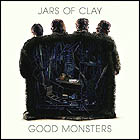 After some sidesteps into rootsy country music influences, Jars Of Clay resumes their rock ‘n’ roll course with Good Monsters. Some country influences are still on display, but the past two albums’ flirtation with roots music really seemed to obscure what drew such an audience to the Jars in the first place: these guys can flat-out rock. The first single, “Dead Man (Carry Me)”, is one of the rockiest songs on the album, but it gives you a fair idea of what to expect here – decent, guitar-driven rock, maybe without leaning on studio technique as much as the group’s first two albums, strong vocals with great harmony work, and overall just a return to the group’s more familiar, catchy sound.
After some sidesteps into rootsy country music influences, Jars Of Clay resumes their rock ‘n’ roll course with Good Monsters. Some country influences are still on display, but the past two albums’ flirtation with roots music really seemed to obscure what drew such an audience to the Jars in the first place: these guys can flat-out rock. The first single, “Dead Man (Carry Me)”, is one of the rockiest songs on the album, but it gives you a fair idea of what to expect here – decent, guitar-driven rock, maybe without leaning on studio technique as much as the group’s first two albums, strong vocals with great harmony work, and overall just a return to the group’s more familiar, catchy sound.
“Work” and “Dead Man” give things a fast-paced one-two punch of that return, and then things settle into a nice medium between the group’s rock sound and some of that recently-explored country/folk music territory, with “Good Monsters” and “Take Me Higher” being a couple more of the album’s strongest rock numbers. But while the music is good, the lyrics are outstanding. I have to single out “Work” especially, as it’s a very good example of why Jars Of Clay is one of the only Christian bands I listen to. The lyric “I have no fear of drowning / It’s the breathing that’s taking all this work” is emblematic of the group’s ability to lyrically address the fact that there is a struggle involved in being human and a there’s even a struggle involved in being a Christian – there are plenty of lyrics that address the “praise and worship” prerequisites of this genre of  music, but there are also plenty of mature lyrics like that one which acknowledge a struggle to stay on the straight and narrow. “Oh My God”‘s startling lyrical admission that “We all have a chance to murder” is another example of this (and it may in fact be the best song this band has ever done). That’s something that I don’t find nearly enough of in this genre of music – sort of like I can’t get enough Jars Of Clay. Highly recommended.
music, but there are also plenty of mature lyrics like that one which acknowledge a struggle to stay on the straight and narrow. “Oh My God”‘s startling lyrical admission that “We all have a chance to murder” is another example of this (and it may in fact be the best song this band has ever done). That’s something that I don’t find nearly enough of in this genre of music – sort of like I can’t get enough Jars Of Clay. Highly recommended.
- Work (3:53)
- Dead Man (Carry Me) (3:19)
- All My Tears (3:45)
- Even Angels Cry (4:21)
- There Is A River (3:51)
- Good Monsters (4:05)
- Oh My God (6:05)
- Surprise (3:50)
- Take Me Higher (4:40)
- Mirrors & Smoke (3:58)
- Light Gives Heat (4:41)
- Water Under The Bridge (3:58)
Released by: Essential
Release date: 2006
Total running time: 50:26
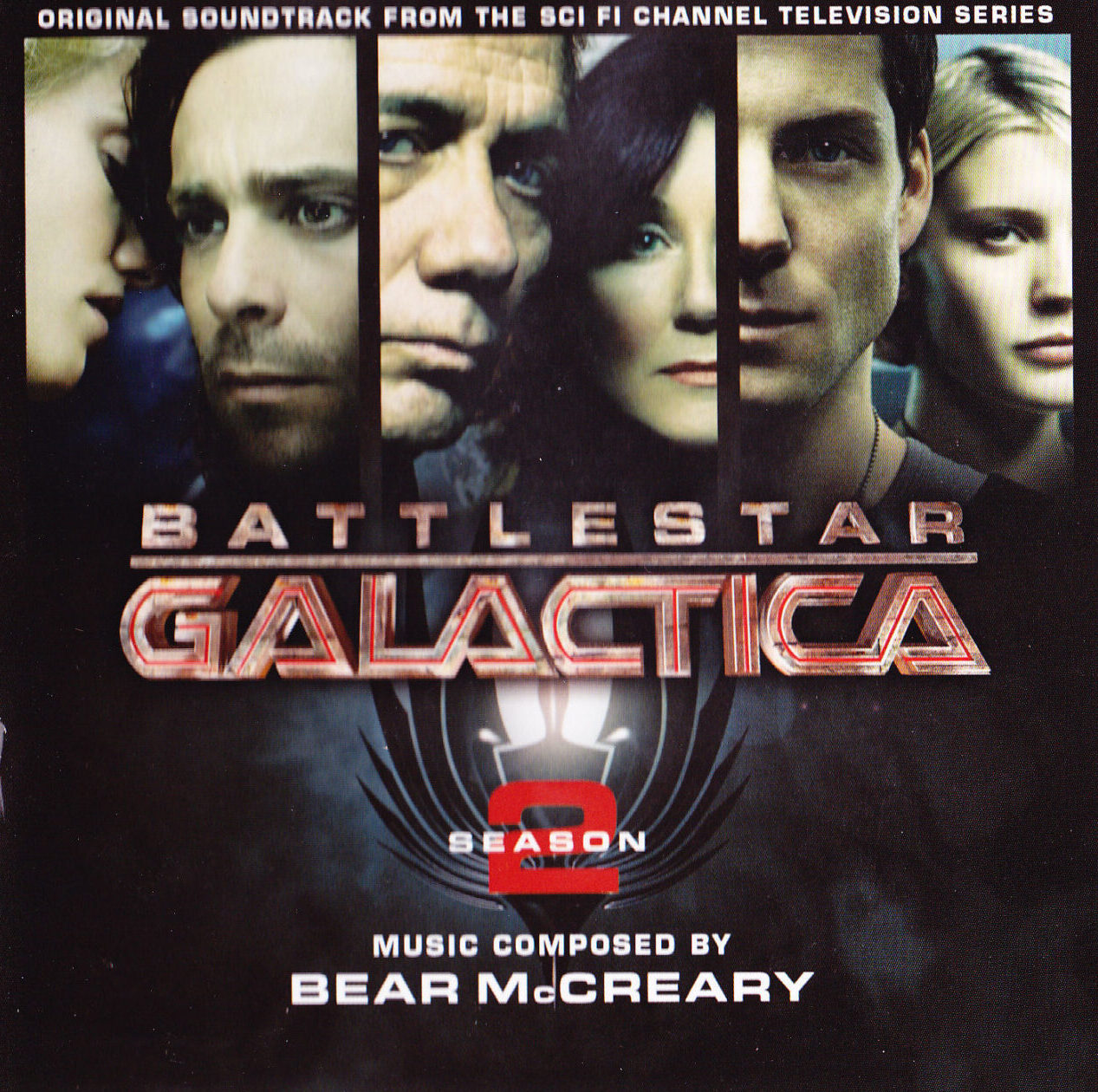
Battlestar Galactica: Season 2 – music by Bear McCreary
With its brutal percussion, vocal laments and unusual instrumentation, the CD of music from the new Battlestar Galactica’s first season was a completely unique sound, and a hard act to follow. But somehow, this collection of music from the show’s intense second season not only builds on the thematic material and style of its predecessor – it transcends it.
The album opens not with the show’s main theme, but with one of the new series’ few tips of the hat to the music of the original. From Final Cut, the original Galactica theme by Stu Phillips effortlessly blends in with the percussive style of the new show, and it’s a brilliant arrangement, even working in elements of the “Exploration theme” that was heard under ’70s Galactica’s opening narration. It’s an attention-getting way to open this album for fans both old and new.
From there, we move firmly into the musical territory of the new series’ second season. Primal percussion remains part of the mix, but carrying on from the first season soundtrack’s “Shape Of Things To Come” track, there is a heavier emphasis on strings here, specifically string quartets. For some, this may seem like an odd thing to add to the millieu of a science fiction show, but for the second season’s bleak emotional territory it’s utterly appropriate. In fact, getting to hear the music by itself, I was struck by how many time I hadn’t noticed that the string quartet became a centerpiece of the season’s mood.
The centerpiece of this album, on the other hand, is an 8+ minute track called “Prelude To War”, effectively a cohesive suite of action/suspense music from Pegasus and both parts of Resurrection Ship. Everything from Adama’s order to effectively start a civil war, to Apollo’s drift into unconsciousness, to the scouting run into the Resurrection Ship is represented here in a way that may not necessarily be sequential to the events, but is very cohesive musically. (It’s not for nothing that this has become my driving-to-work music of late.) Other music from Pegasus and Resurrection Ship can be found in other tracks such as “Pegasus” (the contemporary-sounding gentle guitar intro), “Lords Of Kobol” (the vocal piece heard as the crews reunite), “Roslin And Adama”, “The Cylon Prisoner” and “Gina Escapes”. In fact, it’s no exaggeration to say that Pegasus / Resurrection Ship and Lay Down Your Burdens are the stars of this album, comprising a large share of the CD’s tracks.
Episodes from earlier in the season go a little under-represented as a result, though there are some gems there (“Reuniting The Fleet”, “Martial Law”, the zither-heavy “Baltar’s Dream” cue, and selections from The Farm and Home). I’ll admit to being slightly disappointed that the listless piano solo heard when Starbuck temporarily moved back into her home on Caprica wasn’t present; I found that piece almost hypnotically mesmerizing, but it may not have been a fan favorite. The rest of the CD certainly makes up for it. Later episodes such as Scar and Black Market get one or two licks in.
 And speaking of Black Market and licks, stick around for the last track on the CD, because it’s a treat. “Black Market” (the track, not the episode) starts out like a normal Galactica soundtrack cue, and then suddenly slams into high gear heavy metal guitar solos (courtesy of guest player Steve Bartek, formerly of Oingo Boingo and still occasional orchestrator for Danny Elfman). This track has a wonderful crunchy sound, not just from guitars but from what sound like cellos run through tube distortion – a sound I don’t think I’ve heard since the second ELO album. It’s a great and unexpectedly head-banging closer to another great collection.
And speaking of Black Market and licks, stick around for the last track on the CD, because it’s a treat. “Black Market” (the track, not the episode) starts out like a normal Galactica soundtrack cue, and then suddenly slams into high gear heavy metal guitar solos (courtesy of guest player Steve Bartek, formerly of Oingo Boingo and still occasional orchestrator for Danny Elfman). This track has a wonderful crunchy sound, not just from guitars but from what sound like cellos run through tube distortion – a sound I don’t think I’ve heard since the second ELO album. It’s a great and unexpectedly head-banging closer to another great collection.
Now how can Bear McCreary top this for season 3?
- Colonial Anthem (“Theme From Battlestar Galactica”) (4:02)
- Baltar’s Dream (2:45)
- Escape From The Farm (3:09)
- A Promise To Return (3:03)
- Allegro (4:59)
- Martial Law (1:51)
- Standing In The Mud (1:45)
- Pegasus (2:46)
- Lords Of Kobol (2:50)
- Something Dark Is Coming (8:51)
- Scar (2:26)
- Epiphanies (2:43)
- Roslin And Adama (2:49)
- Gina Escapes (2:00)
- Dark Unions (2:53)
- The Cylon Prisoner (3:51)
- Prelude To War (8:22)
- Reuniting The Fleet (2:45)
- Roslin Confesses (2:09)
- One Year Later (1:43)
- Worthy Of Survival (3:35)
- Battlestar Galactica Main Title (0:45)
- Black Market (5:48)
Released by: La-La Land Records
Release date: 2006
Total running time: 78:53
Tom Petty – Highway Companion
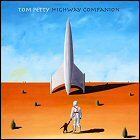 Teaming up with Heartbreakers cohort Mike Campbell and Traveling Wilburys cohort Jeff Lynne, Tom Petty is back in the solo album business with a moody, atmospheric, unpredictable album that I’m finding grows on me more and more with each listen. Built loosely around a theme of traveling and means of transportation, Highway Companion‘s tunes range from catchy rock that sticks in your head and doesn’t leave, to slower numbers drenched in atmosphere. Petty’s ability to craft a song, combined with Lynne’s ability to find each song’s depths, are potent reminder that there was a reason Full Moon Fever was a huge hit some 16 years ago.
Teaming up with Heartbreakers cohort Mike Campbell and Traveling Wilburys cohort Jeff Lynne, Tom Petty is back in the solo album business with a moody, atmospheric, unpredictable album that I’m finding grows on me more and more with each listen. Built loosely around a theme of traveling and means of transportation, Highway Companion‘s tunes range from catchy rock that sticks in your head and doesn’t leave, to slower numbers drenched in atmosphere. Petty’s ability to craft a song, combined with Lynne’s ability to find each song’s depths, are potent reminder that there was a reason Full Moon Fever was a huge hit some 16 years ago.
The standouts include “Flirting With Time”, an upbeat rocker whose chorus defies any attempt to resist singing along, the mezmerizing “Golden Rose”, the spare beauty of “Night Driver”, though really, while I’m just listing my favorites that I find myself re-listening to again and again, I have a harder time thinking of a song that  doesn’t come up to snuff. The album’s that good, with consistently sharp songwriting from Petty and crystal clear (and yet very warm) production. Fans of Petty’s laid-back, country-flavored solo work as well as his edgier, bluesy material with the Heartbreakers won’t be disappointed at all. Highway Companion really is the epitome of the album with something for everyone, and gets some of the highest recommendations I’ve given to an album released this year.
doesn’t come up to snuff. The album’s that good, with consistently sharp songwriting from Petty and crystal clear (and yet very warm) production. Fans of Petty’s laid-back, country-flavored solo work as well as his edgier, bluesy material with the Heartbreakers won’t be disappointed at all. Highway Companion really is the epitome of the album with something for everyone, and gets some of the highest recommendations I’ve given to an album released this year.
- Saving Grace (3:47)
- Square One (3:24)
- Flirting With Time (3:13)
- Down South (3:25)
- Jack (2:28)
- Turn This Car Around (3:58)
- Big Weekend (3:15)
- Night Driver (4:26)
- Damaged By Love (3:22)
- This Old Town (4:15)
- Ankle Deep (3:22)
- The Golden Rose (4:42)
Released by: American
Release date: 2006
Total running time: 43:37
OK Connery – music by Ennio Morricone & Bruno Nicolai
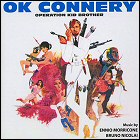 How far removed can one be from a film and still enjoy something about it? This review – and the fact that I bought this CD – will be an exercise in answering that question. For, you see, I’ve seen this movie – but I’ve only seen it with the benefit of a guy and two robots sitting in the bottom right corner of the screen, cracking wise at the movie’s ample supply of foibles. Mystery Science Theater fans will instantly recognize this movie as Operation Double 007, while most parts of the world know it as Operation Kid Brother. The idea behind the movie was simple. Step one: get Sean Connery’s little brother (whether he has any acting experience or not) and as many supporting players as you can from the James Bond movies, and put them in a Bond-esque superspy spoof. Step two: ??? Step three: profit!
How far removed can one be from a film and still enjoy something about it? This review – and the fact that I bought this CD – will be an exercise in answering that question. For, you see, I’ve seen this movie – but I’ve only seen it with the benefit of a guy and two robots sitting in the bottom right corner of the screen, cracking wise at the movie’s ample supply of foibles. Mystery Science Theater fans will instantly recognize this movie as Operation Double 007, while most parts of the world know it as Operation Kid Brother. The idea behind the movie was simple. Step one: get Sean Connery’s little brother (whether he has any acting experience or not) and as many supporting players as you can from the James Bond movies, and put them in a Bond-esque superspy spoof. Step two: ??? Step three: profit!
How much profit did OK Connery pull in? The existence of this album seems to be proof that, not long after the film’s release, it was at least popular enough for composer Ennio Morricone to get everything together that one would need to release a record of the soundtrack. And really, it’s fine music – it’s a bit much in places, but that description could just as easily apply to the movie as a whole. Morricone and Nicolai do a fine job of sending up John Barry’s already-nearly-over-the-top style, and it’s a testament to their work that, even despite having only ever seen this movie with the MST crew cracking wise over the movie audio, the music is so memorable. It’s all here, from the theme music (presented in English, Italian and instrumental forms on this CD, just in case you feel the need to sing along), to the brass-with-60s-electric-guitar action cues, to the hilariously extravagant music from the scene where Adolfo Celi’s supervillain waltzes around in a bathrobe, lights a cigar, and admires what seems to be a personal collection of reclining nude women. Everybody needs a hobby, but man, this guy and his hobby get some killer theme music!
The sound is surprisingly crisp (the master tapes are nearly 40 years old now) and everything has been remastered until it sonically shines. It’s a stunning amount of effort for a movie that, even in regions where it’s better-remembered, was an extremely marginal footnote in cinematic history (and even then, probably only due to the leading man…and his brother). Now, to be fair, you can be sure that the work was undertaken to preserve an unreleased score by one of the cinema’s most famous composers, and I really do appreciate that – but you can also bet that around half of the copies of this CD that have been sold to date have probably been bought by folks who, like myself, have only seen it with Joel and the ‘bots taking well-observed potshots at the movie.
 OK Connery sports some dandy music – if you’re in a specific superspy spoofin’ kinda mood. I just hope that I can someday accumulate my own collection of reclining nudes so I, too, will be worthy of the music on track 2. (I’ve already got a bathrobe.)
OK Connery sports some dandy music – if you’re in a specific superspy spoofin’ kinda mood. I just hope that I can someday accumulate my own collection of reclining nudes so I, too, will be worthy of the music on track 2. (I’ve already got a bathrobe.)
- Man For Me (3:19)
- Connery (1:58)
- Allegri Ragazzi (1:44)
- Primo Amore (4:37)
- A Passo D’uomo (2:39)
- Varco Nel Muro (1:36)
- Connery (2:19)
- Missione Segreta (1:07)
- Verso Il Mare (1:48)
- Fiori Gialli (1:17)
- Gli Enigmi (1:11)
- Diapositive (1:24)
- Can Can Delle Amazzoni (1:46)
- Connery: Congiura (2:42)
- Contrabbando (1:15)
- Turbinosamente (1:25)
- Gatto Parlante (1:14)
- Missione Segreta (1:44)
- La Preda (0:50)
- Man For Me – Italian version (3:04)
- OK Connery – Sequence 1 (1:44)
- OK Connery – Sequence 2 (2:03)
- OK Connery – Sequence 3 (1:58)
- OK Connery – Sequence 4 (1:13)
- OK Connery – Sequence 5 (1:26)
- OK Connery – Sequence 6 (3:05)
- Man For Me – Instrumental (3:11)
- Man For Me – Alternate version (3:10)
Released by: DigitMovies / Beat Records
Release date: 2004
Total running time: 57:02
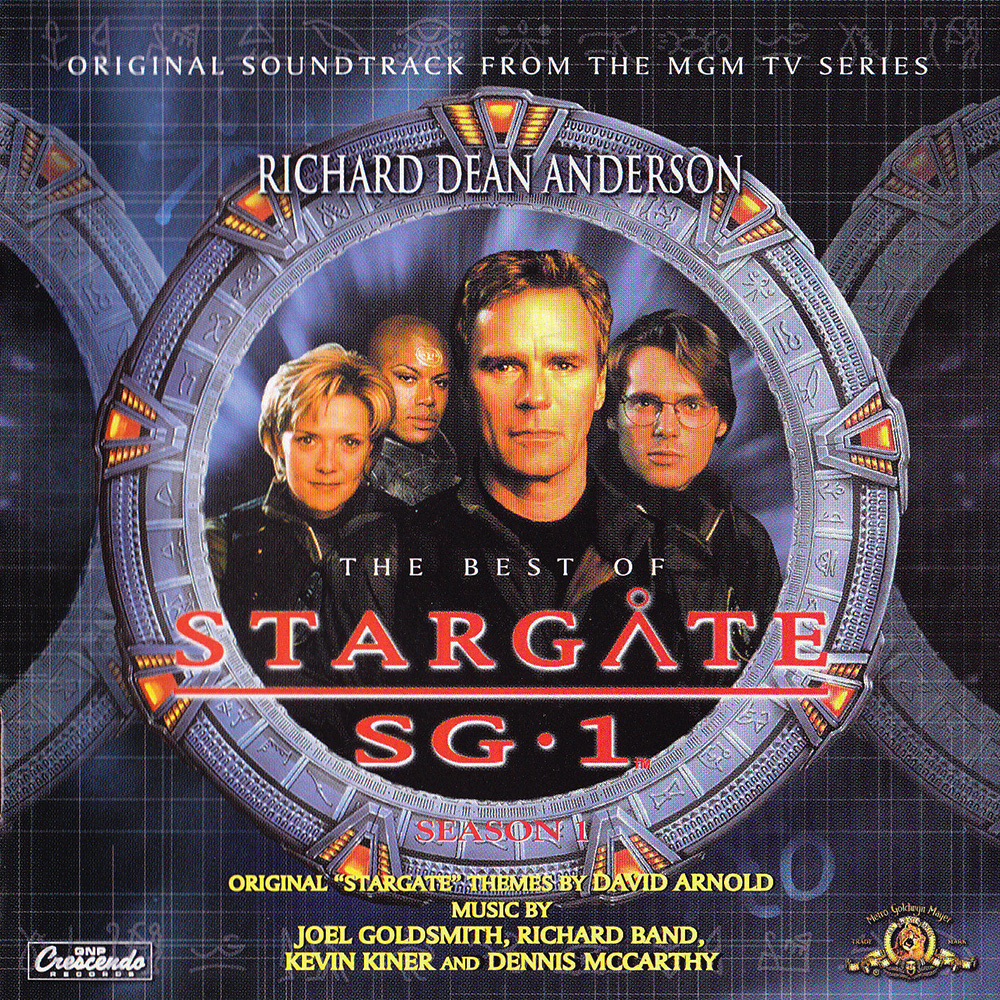
The Best Of Stargate SG-1
 A collection of suites from the first season of the show, The Best Of Stargate SG-1 paints a picture of the show in its infancy – and before Joel Goldsmith had cemented his place as the franchise’s composer-in-residence. Though after listening to the CD several times, it’s just possible that a case could be made that this CD shows why Goldsmith became the solo voice of Stargate.
A collection of suites from the first season of the show, The Best Of Stargate SG-1 paints a picture of the show in its infancy – and before Joel Goldsmith had cemented his place as the franchise’s composer-in-residence. Though after listening to the CD several times, it’s just possible that a case could be made that this CD shows why Goldsmith became the solo voice of Stargate.
Naturally, the CD opens with Goldsmith’s main theme for the movie, adapted from David Arnold’s original Stargate score. The first few tracks, however, present us with a completely different sound than what we’ve grown accustomed to. First up is a suite from The Enemy Within, composed by Star Trek’s Dennis McCarthy and frequent collaborator Kevin Kiner (who McCarthy came to rely on heavily during the last season of Star Trek: Enterprise, when budget constraints forced that series to all but abandon full orchestral scores). This music also sounds synthesized/sampled, but even so, it bears many of the hallmarks of McCarthy’s Star Trek scores – it’s rather nice, and maybe a bit more colorful than McCarthy was generally allowed to be with his Star Trek music.
Richard Band, who began his film scoring career with Joel Goldsmith on the movie Laserblast, contributes a score to Cold Lazarus, but in places it suffers from some slight cheesy-sounding synthesized instrument sounds; that wouldn’t be so distracting, except that the rest of the suites presented here seem to be a notch above it. (To be fair to Mr. Band, however, while this may stick out like a sore thumb on CD, I don’t recall it detracting from the episode itself.) Kevin Kiner flies solo with the scores for two episodes, Emancipation and The Torment Of Tantalus, the latter of which is up there with the best scores that the series has had. Its music is truly varied enough to merit this suite being the longest track on the CD, with the 1940s “period” scenes getting a touch of saxophone.
Longtime fans won’t find the sound they’re used to until the next track, Thor’s Hammer, which introduces a series of suites by Joel Goldsmith. Thor’s Hammer has a chaotic chorus that livens things up, and some passages strongly reminiscent of sections of the music from the then-recent Star Trek: First Contact, on which the junior Goldsmith collaborated with his father. The Nox has some lovely thematic material for the Nox themselves, with some shades of First Contact again creeping into the scenes featuring the Goa’uld. Hathor and Tin Man both show a playful side to Goldsmith’s scoring. Within The Serpent’s Grasp stands as Goldsmith’s crowning achievement of the first year, however, with outstanding action and suspense sections, and as a season cliffhanger it’s practically required to kick ass, and Goldsmith delivers. That’s why he’s got the job.
 Overall, it’s a nice little selection of music from some of the first season’s standout episodes, displaying a musical diversity that the Stargate franchise has since abandoned. Though I might criticize them on their own musical merits, I find all of the tracks here enjoyable, and I sometimes wonder why some of these other composers haven’t been heard from again (aside from these scores being recycled into virtual “library music” for the first two seasons, a la the original Star Trek) – not that I’m complaining about Joel Goldsmith, mind you. Even just from Goldsmith’s scores, I could rattle off a list of 10 or 15 scores off the top of my head which could comprise a second Best Of Stargate SG-1 volume, though whether or not there’d be enough of a market to support it would be another question.
Overall, it’s a nice little selection of music from some of the first season’s standout episodes, displaying a musical diversity that the Stargate franchise has since abandoned. Though I might criticize them on their own musical merits, I find all of the tracks here enjoyable, and I sometimes wonder why some of these other composers haven’t been heard from again (aside from these scores being recycled into virtual “library music” for the first two seasons, a la the original Star Trek) – not that I’m complaining about Joel Goldsmith, mind you. Even just from Goldsmith’s scores, I could rattle off a list of 10 or 15 scores off the top of my head which could comprise a second Best Of Stargate SG-1 volume, though whether or not there’d be enough of a market to support it would be another question.
- Main Title (1:03)
- The Enemy Within (6:46)
- Cold Lazarus (6:10)
- Emancipation (3:36)
- Torment Of Tantalus (10:14)
- Thor’s Hammer (7:33)
- The Nox (10:02)
- Hathor (6:45)
- Tin Man (6:57)
- Within The Serpent’s Grasp (8:43)
- Stargate SG-1 End Credits (0:58)
Released by: GNP Crescendo
Release date: 2001
Total running time: 59:27
Lost – music by Michael Giacchino
 In the liner notes to the CD of the Lost soundtrack, series co-creator J.J. Abrams mentions that the pilot episode was originally tracked with the works of some of the biggest names in film music, and that it took some salesmanship to convince ABC that the show would lose none of its impact when rescored by Abrams’ Alias co-conspirator, composer Michael Giacchino. The irony of that comment is that, for anyone who’s been watching Lost for any amount of time, it’s hard to imagine any of its scenes scored by someone other than Giacchino.
In the liner notes to the CD of the Lost soundtrack, series co-creator J.J. Abrams mentions that the pilot episode was originally tracked with the works of some of the biggest names in film music, and that it took some salesmanship to convince ABC that the show would lose none of its impact when rescored by Abrams’ Alias co-conspirator, composer Michael Giacchino. The irony of that comment is that, for anyone who’s been watching Lost for any amount of time, it’s hard to imagine any of its scenes scored by someone other than Giacchino.
The disc kicks off with Abrams’ own abstract composition for the show’s trend-settingly short main titles (a number of series took the hint and abruptly curtailed their main titles, and some showrunners – such as the makers of the two Stargate series – discovered that ten second main titles just weren’t for them).
Again going back to the liner notes, Abrams acknowledges that the temp score originally laid over the pilot was more bombastic than what has evolved in Giacchino’s body of work; it’s not that Lost doesn’t ever require that kind of music, but it’s not handled with typical Hollywood orchestral fire-and-brimstone. That’s not to say that Giacchino doesn’t echo some great Hollywood styles. “Hollywood And Vines” sounds like something from John Barry’s late 70s/early 80s repertoire, and the now familiar stabbing swirl of Hermann-esque strings makes its debut in “Charlie Hangs Around”.
Speaking of familiarity, this CD does a great job of recreating the atmosphere for those already acquainted with the show; as a listening experience, though, it occasionally retreads the same ground with a small number of recurring motifs and themes – at least two tracks end on the show’s suspenseful signature slur of brass, for example. Many of the cues presented here are from the two-part pilot episode, with the remainder originating from almost every episode in the first season, and presented with only a couple of exceptions in strict story order. Some listeners may come to find that they can program their CD player to play the tracks in a different order for a more cohesive listening experience, but given that the slow discovery of the story and the mysteries of the island are at the heart of the show, the chronological track listing does make sense. (If you’re wondering about another sonic signature, the gunshot-like sound that takes you into most commercial breaks, that’s the very last thing on the CD.) Good stuff for folks who are fans of the show’s music (which will probably be 95% of the people buying the CD), but it might make a few listeners wonder whether they just heard the same thing twice.
 That’s an extremely minor quibble, though. This is a nice example of a fully orchestrated score for modern TV (and with all of the session players graciously name-checked in the booklet, no less – very classy!), and chances are it’s more fun to listen to than the LPs Desmond was stuck with in his Dharma dome. If you’re in the mood for dark and moody, then by all means, get Lost.
That’s an extremely minor quibble, though. This is a nice example of a fully orchestrated score for modern TV (and with all of the session players graciously name-checked in the booklet, no less – very classy!), and chances are it’s more fun to listen to than the LPs Desmond was stuck with in his Dharma dome. If you’re in the mood for dark and moody, then by all means, get Lost.
- Main Title by J.J. Abrams (0:16)
- The Eyeland (1:58)
- World’s Worst Beach Party (2:46)
- Credit Where Credit Is Due (2:24)
- Run Like, Um…Hell? (2:23)
- Hollywood And Vines (1:54)
- Just Die Already (1:53)
- Me And My Big Mouth (1:08)
- Crocodile Locke (1:52)
- Win One For The Reaper (2:39)
- Departing Sun (2:44)
- Charlie Hangs Around (3:19)
- Navel Gazing (3:26)
- Proper Motivation! (2:01)
- Run Away! Run Away! (0:32)
- We’re Friends (1:33)
- Getting Ethan (1:36)
- Thinking Clairely (1:06)
- Locke’d Out Again (3:32)
- Life And Death (3:41)
- Booneral (1:40)
- Shannonigans (2:27)
- Kate’s Motel (2:09)
- I’ve Got A Plane To Catch (2:39)
- Monsters Are Such Interesting People (1:31)
- Parting Words (5:31)
- Oceanic 815 (6:11)
Released by: Varese Sarabande
Release date: 2006
Total running time: 74:51
Krull – music by James Horner
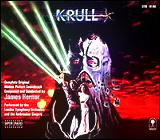 Krull! If that word conjures up images of Kevin Sorbo and swords and sorcery…well, you’re in the wrong place. That was Kull The Conqueror. Krull was a big-budget 1983 popcorn flick featuring Kenneth Marshall and swords and sorcery, and it was practically designed to be the next Star Wars. Needless to say…it wasn’t. While it brought the concept of throwing stars to the attention of a great many youngsters (myself included), Krull wasn’t a box office smash. And much as I hate to say it, perhaps its soundtrack has something to do with that.
Krull! If that word conjures up images of Kevin Sorbo and swords and sorcery…well, you’re in the wrong place. That was Kull The Conqueror. Krull was a big-budget 1983 popcorn flick featuring Kenneth Marshall and swords and sorcery, and it was practically designed to be the next Star Wars. Needless to say…it wasn’t. While it brought the concept of throwing stars to the attention of a great many youngsters (myself included), Krull wasn’t a box office smash. And much as I hate to say it, perhaps its soundtrack has something to do with that.
I’ll admit, however, that what is stated above is my opinion alone, and it’s not one shared by soundtrack collectors or film music fans for the most part. James Horner’s Krull soundtrack is revered, and this 2-CD version released in the 1990s by the now-defunct internet soundtrack specialty shop Supercollector.com is considered particularly desirable on the collectors’ circuit. But when I listen to it, what hits my ears sounds like the music from Star Trek II, cut-and-pasted around a bit so it doesn’t sound exactly the same. Even the arrangements and the balance of instruments used is nearly identical. I do like the heraldic blasts of brass the punctuate the more heroic moments of the music, but so much of the bulk of Krull‘s music is borrowed from The Wrath Of Khan that it’s not funny – I already paid for this same music once. (See also: Horner’s music from Aliens.)
 To be fair, though, I will give Horner some praise for his attempts to differentiate Krull from his previous work. There’s a cuttingly siren-like descending synth note in the attack scenes involving the Black Fortress minions that, while it’s a bit dated now, does indeed jump right out, grab you by the neck and telegraphs “bad news!” straight into your ears. “Ride Of The Firemares”, even with its own borrowed passages, is simply one of the best things Horner’s ever put in front of an orchestra.These new developments to what seems like very familiar material are interesting…but I’d be more inclined to adjust my thinking of Horner from unoriginality to an artist who keeps revisiting a theme until he’s perfected it if I hadn’t had to pay good money to hear every “work in progress” stage of that theme.
To be fair, though, I will give Horner some praise for his attempts to differentiate Krull from his previous work. There’s a cuttingly siren-like descending synth note in the attack scenes involving the Black Fortress minions that, while it’s a bit dated now, does indeed jump right out, grab you by the neck and telegraphs “bad news!” straight into your ears. “Ride Of The Firemares”, even with its own borrowed passages, is simply one of the best things Horner’s ever put in front of an orchestra.These new developments to what seems like very familiar material are interesting…but I’d be more inclined to adjust my thinking of Horner from unoriginality to an artist who keeps revisiting a theme until he’s perfected it if I hadn’t had to pay good money to hear every “work in progress” stage of that theme.
- Main Title & Colwyn’s Arrival (7:34)
- The Slayers Attack (9:20)
- Quest For The Glaive (7:23)
- Ride To The Waterfall (0:54)
- Lyssa In The Fortress (1:29)
- The Walk To The Seer’s Cave (4:10)
- The Seer’s Vision (2:19)
- Battle In The Swamp (2:40)
- Quicksand (3:39)
- The Changeling (4:04)
- Colwyn and Lyssa (Love Theme) (2:38)
Disc Two:
- Leaving The Swamp (2:00)
- The Widow’s Web (6:19)
- The Widow’s Lullaby (5:02)
- Vella (3:47)
- Ynyr’s Death (1:42)
- Ride Of The Firemares (5:23)
- Battle Of The Parapets (2:53)
- Inside The Black Fortress (6:15)
- The Death Of The Beast and The Destruction of the Dark Fortress (8:32)
- Epilogue & End Title (4:50)
Released by: Super Collector / Supertracks
Release date: 1998
Disc one total running time: 46:10
Disc two total running time: 46:43
Mike Oldfield – Hergest Ridge
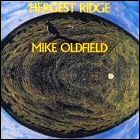 His first album after the seminal Tubular Bells, Mike Oldfield’s Hergest Ridge dips into decidedly Celtic waters. The best thing about this epic two-part composition is that it really does take one on a journey – the main themes and motifs are developed, come to a climax, and then put on the back burner while other themes come to the fore, and everything reappears toward the end for a surprisingly laid-back summation. Despite the classical structure, it’s very much a modern work. Oldfield’s guitar work is nothing short of phenomenal, ranging from bucolic, Celtic-style strumming to full-blast heavy metal, and there are several thematic previews of his next album, Ommadawn, to be heard. (In fact, if you’ve got the hour or so to burn, I strongly suggest listening to Hergest Ridge and Ommadawn back to back.) There is also an abundance of orchestral instrumentation here, as well as a full choral version of one theme.
His first album after the seminal Tubular Bells, Mike Oldfield’s Hergest Ridge dips into decidedly Celtic waters. The best thing about this epic two-part composition is that it really does take one on a journey – the main themes and motifs are developed, come to a climax, and then put on the back burner while other themes come to the fore, and everything reappears toward the end for a surprisingly laid-back summation. Despite the classical structure, it’s very much a modern work. Oldfield’s guitar work is nothing short of phenomenal, ranging from bucolic, Celtic-style strumming to full-blast heavy metal, and there are several thematic previews of his next album, Ommadawn, to be heard. (In fact, if you’ve got the hour or so to burn, I strongly suggest listening to Hergest Ridge and Ommadawn back to back.) There is also an abundance of orchestral instrumentation here, as well as a full choral version of one theme.
 There really aren’t any drawbacks; this kind of longform composition has fallen into disuse these days, so those looking for convenient places to take a break may be a little put off by the length of the tracks. To them, I can only say that it’s worth it to sit and listen to this one (and indeed, to any of Oldfield’s longform works). Very highly recommended for those who want to hear an ambient instrumental piece that isn’t steeped in electronica, and lasts longer than five or six minutes.
There really aren’t any drawbacks; this kind of longform composition has fallen into disuse these days, so those looking for convenient places to take a break may be a little put off by the length of the tracks. To them, I can only say that it’s worth it to sit and listen to this one (and indeed, to any of Oldfield’s longform works). Very highly recommended for those who want to hear an ambient instrumental piece that isn’t steeped in electronica, and lasts longer than five or six minutes.
- Part One (21:28)
- Part Two (18:45)
Released by: Caroline
Release date: 1974
Total running time: 40:13
The Strokes – Room On Fire
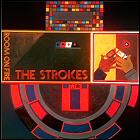 It’s official – I must live on another planet, because I missed the music industry hype around the Strokes’ second album, released in 2003. I gather that some of the fans accumuated from their first album in 2001 didn’t dig this one, but as I haven’t heard that one, I really enjoyed Room On Fire. Its eleven songs are compact, economical morsels of catchy-as-hell power pop with almost insanely hummable hooks.
It’s official – I must live on another planet, because I missed the music industry hype around the Strokes’ second album, released in 2003. I gather that some of the fans accumuated from their first album in 2001 didn’t dig this one, but as I haven’t heard that one, I really enjoyed Room On Fire. Its eleven songs are compact, economical morsels of catchy-as-hell power pop with almost insanely hummable hooks.
I seldom just fall all over myself fawning over an album, but there simply isn’t a lame song on this disc. “What Ever Happened?” is almost deceptively easygoing as an opening number, but it’s chased down by one of the album’s strongest songs, “Reptilia”, which sees this very small band getting a very big sound. Lead man Julian Casablancas may not have a voice that’s to everyone’s taste, but it grew on me. The guy can sing, but on some songs he sees fit to scream instead – and with repeated listening, I’ve come to the conclusion that his instincts are usually right on the money. “Reptilia”, for example, wouldn’t be quite the same without it.
“Repitilia” is a straight-out-of-the-70s, straight ahead hard rocker, while “Between Love And Hate” and “Automatic Stop” almost show the tiniest hints of reggae influence. “Under Control” takes a few 50s-style riffs and runs them all through heavy distortion. “12:51”, the song whose video was played out as a lost scene from Tron*, almost sounds like the Cars’ first two albums, only the “synth” sounds are actually coming from a guitar. Which brings me to another point – for a five-piece band, and a young one at that, the Strokes are impeccably tight. Actually, at first I typed “impossibly tight.” And I’m not sure that’s wrong either. Instrumentally, they’re a fantastic band.
 It wasn’t until after I wrote the bulk of this review that I looked around, saw that there seemed to be some “received wisdom” that this album didn’t live up to the debut, and adjusted things accordingly – meaning I made a mention that some folks see a sophomore slump here, but I certainly don’t. Since I’m evidently listening to the Strokes’ discography backwards, I hope that their first album was as good as Room On Fire, because nothing about this one is lacking to my ears.
It wasn’t until after I wrote the bulk of this review that I looked around, saw that there seemed to be some “received wisdom” that this album didn’t live up to the debut, and adjusted things accordingly – meaning I made a mention that some folks see a sophomore slump here, but I certainly don’t. Since I’m evidently listening to the Strokes’ discography backwards, I hope that their first album was as good as Room On Fire, because nothing about this one is lacking to my ears.
- What Ever Happened? (2:50)
- Reptilia (3:39)
- Automatic Stop (3:27)
- 12:51 (2:26)
- You Talk Way Too Much (3:00)
- Between Love And Hate (3:09)
- Meet Me In The Bathroom (2:53)
- Under Control (3:02)
- The End Has No End (3:04)
- The Way It Is (2:21)
- I Can’t Win (2:35)
Released by: RCA
Release date: 2003
Total running time: 32:26
* In addition to the Tron video, the artwork on the “Reptilia” CD single was the marquee artwork from Atari’s arcade game Centipede. I think I spot a trend…
Afro Celt Sound System – Anatomic
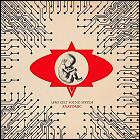 It took me an unusually long time to warm up to Anatomic, the latest from the re-renamed Afro Celt Sound System (who had dropped the “Sound System” from their name on their previous album, to the dismay of some longtime fans). It’s not that it’s not good music – it most certainly is – but this group is renowned for knocking down so many boundaries of style and genre and categories in music that, by comparison, bits of Anatomic seem tame – particularly after the rousing entry that was Seed. This may be a case where the band’s long term fans, the folks who get to hear and appreciate the album tracks and not just the singles, will love it, but listers who sample the group more casually may not get it.
It took me an unusually long time to warm up to Anatomic, the latest from the re-renamed Afro Celt Sound System (who had dropped the “Sound System” from their name on their previous album, to the dismay of some longtime fans). It’s not that it’s not good music – it most certainly is – but this group is renowned for knocking down so many boundaries of style and genre and categories in music that, by comparison, bits of Anatomic seem tame – particularly after the rousing entry that was Seed. This may be a case where the band’s long term fans, the folks who get to hear and appreciate the album tracks and not just the singles, will love it, but listers who sample the group more casually may not get it.
There’s no one common thread that ties the strongest Anatomic songs together – “Beautiful Rain” is an almost hypnotic song with gentle male vocals, “Dohl Dogs” is a rousing instrumental number with a solid wall of polyrhythmic percussion, and the title track, also an instrumental, hearkens back to the System’s best Celtic-heavy fusion dance numbers. The album opens strong with “When I Still Needed You”, and though it’s a  slower track, I like “Mother” as well. But some of the other tracks just couldn’t hold my attention – again, they’re not bad music, but they’re strong candidates for background music.
slower track, I like “Mother” as well. But some of the other tracks just couldn’t hold my attention – again, they’re not bad music, but they’re strong candidates for background music.
Which may actually be what devotees of this band are looking for, for all I know. At any rate, there’s good stuff on here, but it’s an uneven listen to plow all the way through the whole album.
- When I Still Needed You (8:16)
- My Secret Bliss (7:04)
- Mojave (10:35)
- Senè (Working The Land) (5:59)
- Beautiful Rain (4:59)
- Anatomic (5:24)
- Mother (6:29)
- Dohl Dogs (6:25)
- Drake (6:04)
Released by: RealWorld
Release date: 2005
Total running time: 61:15
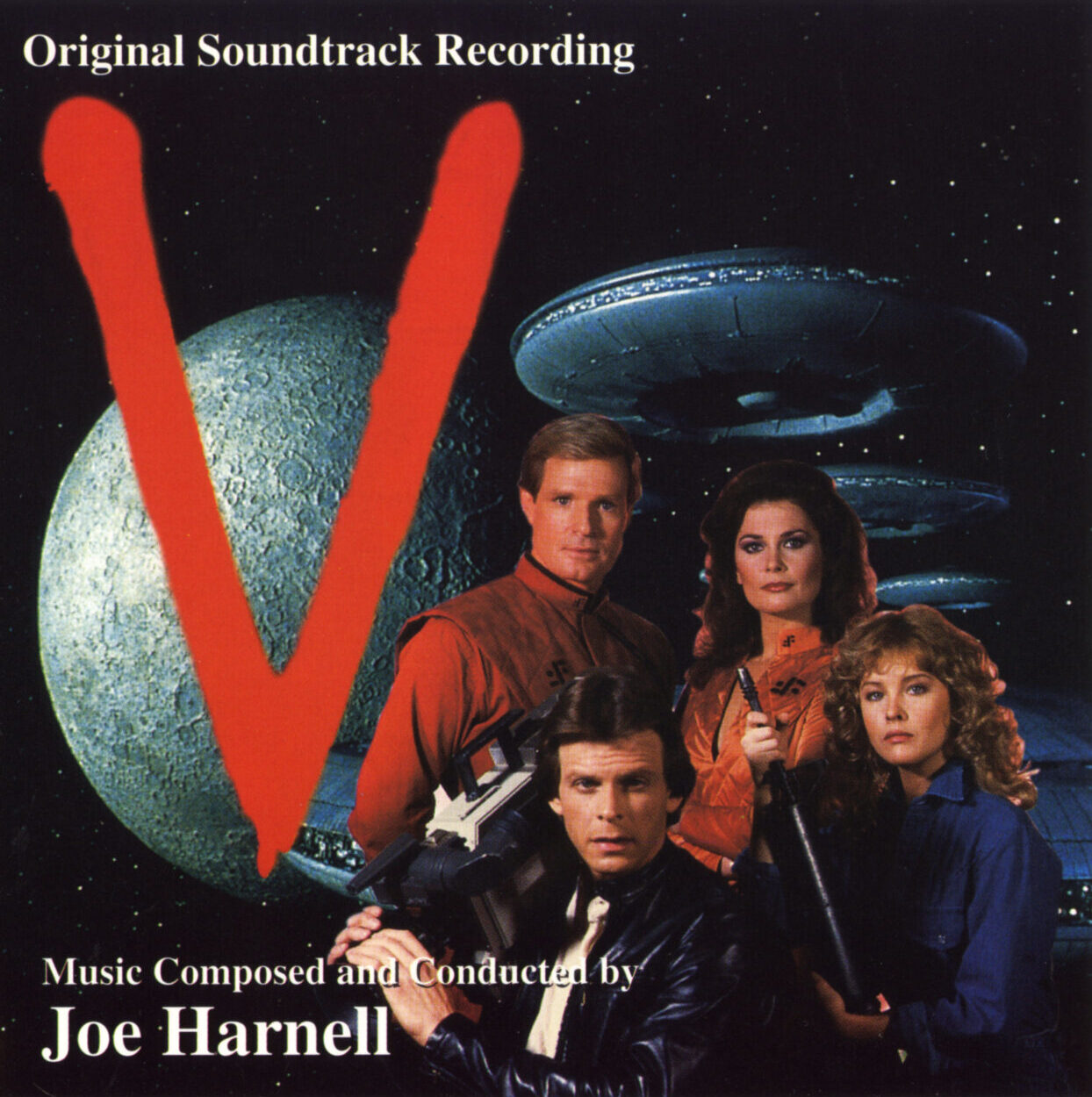
V – music by Joe Harnell
When most people (and apparently most compilation/re-recording-happy labels like Silva Screen) think of the music from V, they think of Dennis McCarthy’s theme from the weekly series rather than the music Joe Harnell recorded for the original NBC miniseries that started it all. Fortunately, in the 90s, a “composer promo” (a CD of an otherwise unreleased score shopped around by Hollywood composers to find additional work, and often sold on the sly by the duplication house to cover expenses) of Harnell’s score from V was available, so it’s possible to compare and contrast.
Harnell had previously worked with writer/director Kenneth Johnson on the TV version of The Incredible Hulk, giving that show’s opening titles a surprisingly somber piano treatment where big-screen orchestral bombast would’ve almost seemed like a prerequisite. In the case of V, Johnson had already temp-tracked the rough cut of the miniseries with everything from Beethoven to Holst’s The Planets, and in some cases had specific reasons for doing so (such as allusions to the BBC’s use of the first four notes of Beethoven’s Fifth Symphony to announce an embedded message from the Resistance during World War II). So in some cases, rather unusually, it’s pretty easy to determine the music on which Harnell’s material is based, even for those with very little classical music exposure. Mars, Bringer Of War and Neptune, The Mystic from Holst’s The Planets suite, for example, can be heard pretty clearly in places.
Some of Harnell’s more original cues, though in some cases they suffer a little bit from that 80s style of obviously musically telegraphing the scene’s intent to the viewer, are worthy of attention as well. He leans heavily on a small handful of “tension” motifs throughout the score for V, and they’re composed in such as a way as to be endlessly versatile. I have a bit of a love-hate relationship with the love theme Harnell wrote here, because the first half of it is just beautiful stuff, and the second half descends into clichè a bit; then again, this is a score for a TV miniseries which no one knew would take off like it did, not a concerto for the ages.
The low-key-but-rollicking theme for the Resistance recurs often in the course of the CD, and may well be the most memorable motif Harnell came up with. It’s also a pretty versatile piece of music, as it varies from menace to a heraldic victory march. There’s another call to arms in the form of one of my favorite cues, “Go Tell Your Friends” (also known as the final scene of the first night of the miniseries, in which an elderly Jewish Holocaust survivor tries to stir the spirit of rebellion among some young people who know they need to do something, but just don’t know what). And on the subject of victory marches, Harnell goes all out with the end credits, Gloria Victoria, a triumphant piece that, with a lyrical assist from Kenneth Johnson, turns into a mass. (And I mean “mass” as in “sung in Latin by a choir,” by the way.) Powerful stuff. Maybe unsubtle, but certainly powerful.
Also included is the opening title cue, along with a couple of “street” source cues (i.e. music playing from an on-screen source which the characters can hear, unlike the majority of a dramatic underscore) which haven’t aged well at all, and a version of Gloria Victoria without the choir.
 Overall, Joe Harnell’s take on V has aged very well in the past two decades, though a few bits of it haven’t aged quite as gracefully. But it’s an epic effort, and certainly as deserving of a listen as the more frequently-circulated McCarthy music that came later in the franchise.
Overall, Joe Harnell’s take on V has aged very well in the past two decades, though a few bits of it haven’t aged quite as gracefully. But it’s an epic effort, and certainly as deserving of a listen as the more frequently-circulated McCarthy music that came later in the franchise.
- Opening Titles / Donovan Looks Up (3:25)
- “It’s Opening” / Good Luck (3:22)
- Just Buddies / Lizard Love (2:56)
- Ruthless / The Car / 1st Victim / Flashback (4:20)
- Shuttle Buddies / Meal Time / Lizard Wrestling (4:22)
- The Resistance (1:52)
- Into The Trap / Tony & Donovan Captured (4:32)
- Ben’s Flight (2:13)
- “Go Tell Your Friends” (1:14)
- Abraham’s Music / The Letter (3:04)
- Storage Area / Watertanks / Food / Attack (2:46)
- Escape From The Mothership / Air Chase / Donovan’s Luck (8:40)
- The Wounded Fall / Julie’s Stand / Donovan To The Rescue (2:56)
- Kathleen’s Death (2:52)
- Finale / Gloria Victoria (1:38)
- “V” Theme (1:17)
- Elias’ Radio (3:02)
- Street Music (2:00)
- Gloria Victoria (without choir) (1:34)
Released by: Super Tracks Music
Release date: 1998
Total running time: 58:07
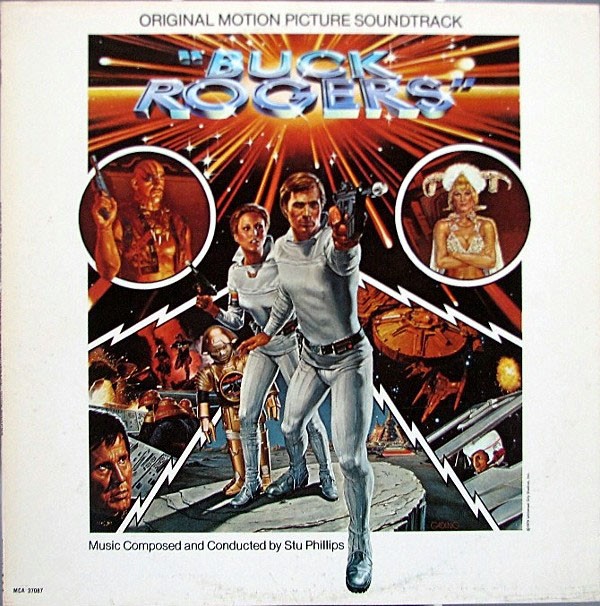
Buck Rogers In The 25th Century – music by Stu Phillips
 Teamed with Glen A. Larson for the second time in as many years, composer Stu Phillips created an interesting sound for Larson’s second swipe at big-budget television space opera. Buck Rogers shared many things with Battlestar Galactica – sets, props, special effects, and a tendency to decline after the show’s first season – but Larson’s new space adventure show got a different musical treatment. Where Phillips had unabashedly done a very serious pastiche of John Williams’ Star Wars stylings for Galactica, his music for Buck Rogers is, rather like the show, more lighthearted. When action or emotional scenes are called for, Phillips calls on a somewhat different feel than Galactica’s dramatic moments – a little more romantic and melodramatic in places – but even in action scenes, Phillips injects a little more “bounce” into the proceedings than one might expect. Buck Rogers dates back to 1930s radio serials, and in some ways, Phillips seems to be keeping that in mind – the music is frequently bold, brassy, and endearingly over-the-top.
Teamed with Glen A. Larson for the second time in as many years, composer Stu Phillips created an interesting sound for Larson’s second swipe at big-budget television space opera. Buck Rogers shared many things with Battlestar Galactica – sets, props, special effects, and a tendency to decline after the show’s first season – but Larson’s new space adventure show got a different musical treatment. Where Phillips had unabashedly done a very serious pastiche of John Williams’ Star Wars stylings for Galactica, his music for Buck Rogers is, rather like the show, more lighthearted. When action or emotional scenes are called for, Phillips calls on a somewhat different feel than Galactica’s dramatic moments – a little more romantic and melodramatic in places – but even in action scenes, Phillips injects a little more “bounce” into the proceedings than one might expect. Buck Rogers dates back to 1930s radio serials, and in some ways, Phillips seems to be keeping that in mind – the music is frequently bold, brassy, and endearingly over-the-top.
First off, let’s not forget the opening theme song with lyrics (by Larson himself), sung by Kip Lennon; bearing in mind that this LP is really the soundtrack to the Buck Rogers pilot movie, this is how that particular installment started, and the opening title music that you might be more familiar with isn’t found on this album. “Suspension” is the same tune as the opening and end credits of the weekly series, but mellowed out until it’s in Manilow territory.
“The Draconia / Buck Awakens” follows, and is the first exhibit in my case for Phillips keeping an eye and an ear on the roots of Buck Rogers. Loud, busy, boisterous blasts of brass herald the arrival of a menacing warship, and even if you’re not looking at the screen, the music really hits you over the head with the message that something not good is going on. Princess Ardala gets an interestingly sinewy theme that still has an underlying menace, while “Buck’s Heroics” is a James Bond-worthy, brassy action theme with a great rhythm. Apparently this latter track impressed the show’s producers too, because you can hear various bits of it excerpted for the pre-show highlights teaser that appears before the opening titles of every subsequent episode.
My favorite non-action cue here is “Introducing Twiki And Dr. Theo”, which sets up a theme that would recur throughout the series even when composers other than Phillips handled the scoring duties on weekly episodes. Whimsical synthesizers introduce a lighthearted theme for everyone’s favorite 70s TV robot, and that theme is then handed off to pizzicato strings and segues to full orchestra, which then transforms the piece into a gorgeous passage covering a travelogue-style scene of New Chicago. Even with the whimsical elements dating it a bit, the latter half of this track is beautiful stuff.
The next real highlight is “Dead City / Attack Of The Mutants”, a dark, suspenseful piece underscoring Buck’s nearly-fatal trip outside of the protective walls of New Chicago. Phillips sounds like he’s trying to strike a balance between John Williams-style lyricism and Jerry Goldsmith’s brutally atonal music from Planet Of The Apes, leaning more toward the former, but for late 70s TV it’s not bad.
And then…there’s the music that dates the score almost as much as the copyright date on the back of the album cover. Well, this isn’t much of a surprise after the disco-fied “Love, Love, Love” cue from the Galactica soundtrack, but what is a surprise is that Phillips was at least a little bit more forward-looking this time around, concocting a funky synthesizer cue that anticipated just a little bit of the new wave sound that was already emerging in the late 70s with artists such as Gary Numan, Kraftwerk and Lene Lovich. Please don’t mistake this for a comparison between the “Something Kinda Funky” cue and those acts’ best works, but simply a statement that, while the material does date itself, it was at least – in its day – a little more ahead of its time and a little less of its time. (Subsequent viewing of the TV series beyond the pilot, however, reminds me that future scenes with source music – i.e. music that the characters can hear, as opposed to underscore – did slip back into a disco mode.)
More action music follows in “Buck Vs. Tigerman”, which continues to develop the action motif from “Buck’s Heroics”. “Fanfare And Appearance Of Draco” has the amusing distinction of being the music for one of the pilot’s most disposable scenes, featuring Joseph Wiseman (of Dr. No fame) in a blink-and-you’ll-miss-it cameo as the never-seen-again but oft-mentioned Emperor of Draconia. The action motif returns in a more desperate arrangement in Tailpipe Torpedo, though the final big action scene – and probably the pilot’s biggest concession to the then-recent musical influence of Star Wars – comes in “Wilma Saves Buck”, with “What An Ending” tacking on the kind of freeze-frame-the-final-shot-under-the-Glen-Larson-credit ending that became the de facto conclusion for every episode that followed.
 So, with this title more than 25 years out of circulation, why are we even talking about it, aside from the fact that Buck Rogers was recently released in its entirety on DVD? There are rumblings on the ‘net from none other than Stu Phillips himself that the Buck Rogers soundtrack may at some point soon be released on CD for the first time (fair warning: any Buck CDs you’ve seen are bootlegs), though despite the slight resurgence in interest in the TV series that came with that DVD release, Phillips may release it as a “composer promo,” which is usually only a few steps removed from a bootleg. We’ll keep you updated on the release status for the soundtrack, because it’s one of those things that, if you were there, you remember the music pretty fondly. I know I do.
So, with this title more than 25 years out of circulation, why are we even talking about it, aside from the fact that Buck Rogers was recently released in its entirety on DVD? There are rumblings on the ‘net from none other than Stu Phillips himself that the Buck Rogers soundtrack may at some point soon be released on CD for the first time (fair warning: any Buck CDs you’ve seen are bootlegs), though despite the slight resurgence in interest in the TV series that came with that DVD release, Phillips may release it as a “composer promo,” which is usually only a few steps removed from a bootleg. We’ll keep you updated on the release status for the soundtrack, because it’s one of those things that, if you were there, you remember the music pretty fondly. I know I do.
- Cosmic Forces (0:35)
- Suspension (Song From Buck Rogers) (2:59)
- The Draconia / Buck Awakens (2:05)
- Princess Ardala / Seduction (2:40)
- Buck’s Heroics (1:42)
- Introducing Twiki And Dr. Theo (1:05)
- Pirate Attack (2:21)
- Buck Returns To Earth (2:35)
- Dead City / Attack Of The Mutants (3:47)
- Something Kinda Funky (3:05)
- Buck Vs. Tigerman (2:43)
- Fanfare And Appearance Of Draco (2:09)
- Tailpipe Torpedo (2:10)
- Wilma Saves Buck / What An Ending (2:41)
- Suspension (Reprise) (2:20)
Released by: MCA
Release date: 1979
Total running time: 35:08
Intellivision In Hi-Fi
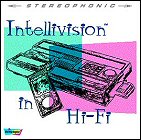 More or less an album songs performed by or inspired by the Intellivision video game console, Intellivision In Hi-Fi is an affectionate throwback to the days when video game music was anything but hi-fi. To come even close to approximating a popular piece of music was a feat, and achieving true polyphony, even in just a flat, synthesizer-esque tone, was pure luxury. Intellivision was the first home game console to manage this level of musical sophistication, and even so, it only did so on the most primitive of levels – no attack or decay or anything as fancy as sounds intended to emulate acoustical instruments. But even with that extreme return to the basics of making music, Intellivision game designers pulled off some real winners – the jazzy chase music heard when Snafu drops from a four-player game to a two-player death match, the catchy theme (coined by a then-unknown musician named George “The Fat Man” Sanger) from Thin Ice, and the sticks-in-your-head-and-stays-there music from Shark! Shark!. All of these and more appear on Intellivision In Hi-Fi.
More or less an album songs performed by or inspired by the Intellivision video game console, Intellivision In Hi-Fi is an affectionate throwback to the days when video game music was anything but hi-fi. To come even close to approximating a popular piece of music was a feat, and achieving true polyphony, even in just a flat, synthesizer-esque tone, was pure luxury. Intellivision was the first home game console to manage this level of musical sophistication, and even so, it only did so on the most primitive of levels – no attack or decay or anything as fancy as sounds intended to emulate acoustical instruments. But even with that extreme return to the basics of making music, Intellivision game designers pulled off some real winners – the jazzy chase music heard when Snafu drops from a four-player game to a two-player death match, the catchy theme (coined by a then-unknown musician named George “The Fat Man” Sanger) from Thin Ice, and the sticks-in-your-head-and-stays-there music from Shark! Shark!. All of these and more appear on Intellivision In Hi-Fi.
There are also numerous Intellivision-generated ditties from never-before-heard programmers’ concept tests and a few aborted works in progress. These include classical pieces such as “Also Sprach Zarathustra” (better known to many as the theme from 2001), and more decidedly modern works along the lines of the James Bond theme and a McDonald’s jingle, among others. (It’s interesting to note that a James Bond video game was later made, but not for the Intellivision, and not by Mattel Electronics, the company that originated the console in 1979.)
To round things out, there are a few more tracks which are either songs about the Intellivision, or are reinterpretations of classic Intellivision musical themes on actual instruments. This along brings us to George Sanger’s surf-rockin’ “Surfing On Thin Ice”, which is in itself a good reason to buy this CD. Jazzy interpretations of music from Snafu and Shark! Shark! also prove to be entertaining. Confusium provides two tracks featuring copious samples of Intellivision sound effects and vintage TV ads starring George Plimpton; the first of these opens the CD to great effect, while the latter is simply too bloody long and wears out its welcome. (At nearly 15 minutes, I find it hard to sit through the whole thing without skipping to the next track.) Best of all, however, is Michael Schwartz’s “My Intellivision”, an appropriately new wave-flavored pop tribute to the machine, sung from the perspective of someone who pines for his long-lost Intellivision.
 Naturally, this CD is really for those who are already enthusiasts of the game machine in question; Intellivision In Hi-Fi doesn’t feature gobs of stuff remixed into a more modern form, opting instead to give you the actual beeps-and-boops sound of the original hardware. I’m a fan of both approaches, but this album’s diverse sampling of original sounds and reinterpretations should have something to please just about everyone.
Naturally, this CD is really for those who are already enthusiasts of the game machine in question; Intellivision In Hi-Fi doesn’t feature gobs of stuff remixed into a more modern form, opting instead to give you the actual beeps-and-boops sound of the original hardware. I’m a fan of both approaches, but this album’s diverse sampling of original sounds and reinterpretations should have something to please just about everyone.
- Compare This! – Confusium (5:03)
- Snafu (1:33)
- Shark! Shark! (0:29)
- Buzz Bombers (0:29)
- Mind Strike (0:24)
- The Jetsons’ Way With Words (0:21)
- Melody Blasters (Blasters Blues) (0:31)
- Thin Ice (Carnival Of The Penguins) (0:43)
- Billiards Blues (1:34)
- Surfin’ On Thin Ice – The Fat Man (3:06)
- Also Sprach Zarathustra (0:47)
- Scooby Doo’s Maze Craze (0:32)
- Thunder Castle Songs (1:29)
- Lounge Shark! Lounge Shark! – The Tilton-Tate Orchestra (3:21)
- Maple Leaf Rag (1:21)
- My Intellivision (1982 Mix) – Michael Schwartz (4:38)
- James Bond Theme (0:37)
- You Deserve A Break Today (0:36)
- Linus & Lucy (1:14)
- Blow Out (0:58)
- Yogi’s Frustration (0:23)
- Rocky & His Friends (0:16)
- The Bullwinkle Show (0:19)
- Snafu City – The Buddy O Trio (3:12)
- The Closest Thing To The Real Thing – Confusium (13:58)
- Tron 1.1 – Tom Kahelin (7.49)
Released by: Intellivision Productions / Retrotopia.com
Release date: 2002
Total running time: 55:42
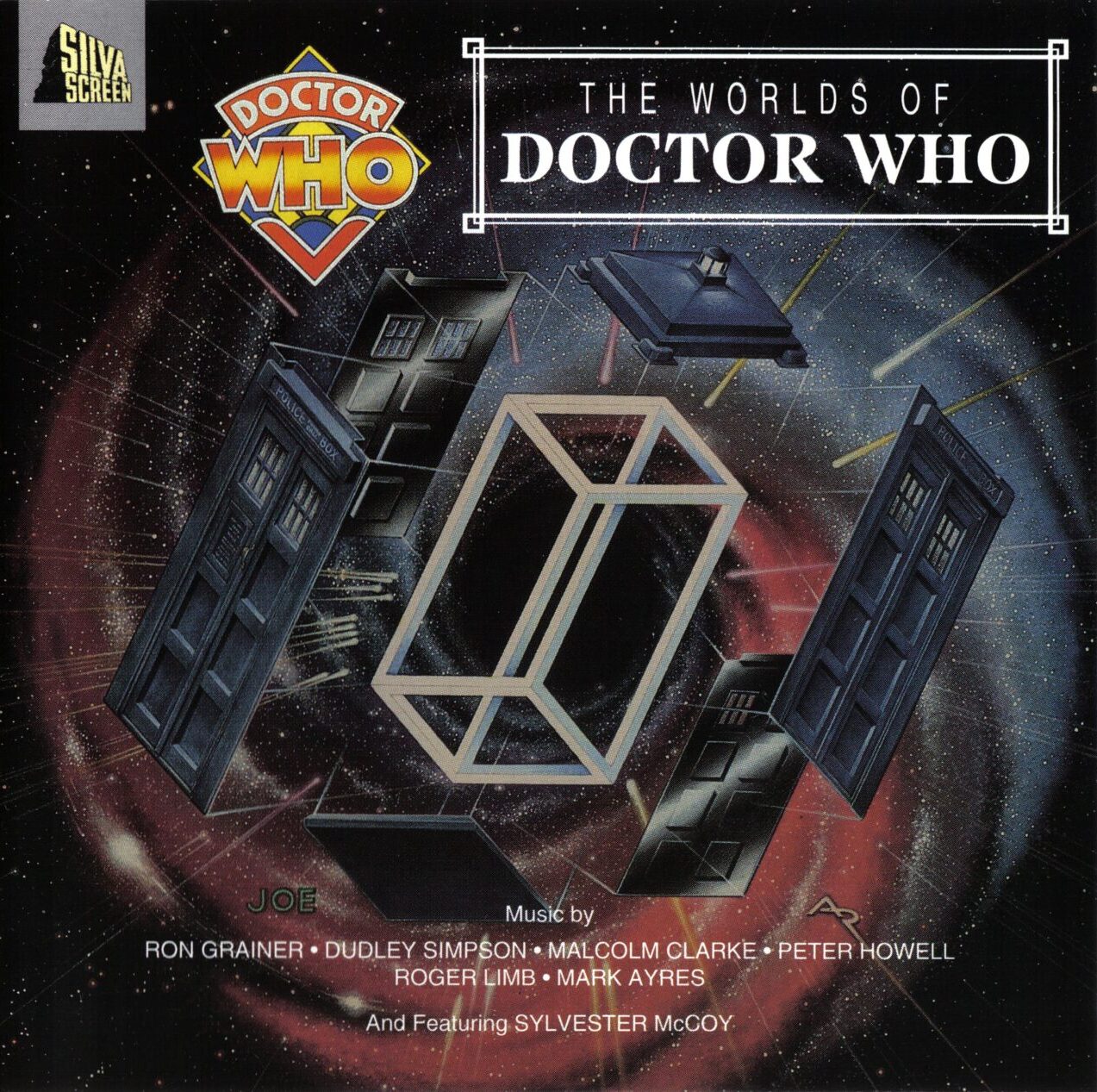
The Worlds Of Doctor Who
The last hurrah for Silva Screen’s license to release Doctor Who music on CD in the 1990s, Worlds Of Doctor Who largely consists of music you’ve heard before if you’ve heard the same label’s other Doctor Who output, give or take a surprise or two.
The album opens and closes with two new versions of the famous theme music, the “Lightning Version” at the beginning and the lively “Spoons Version” at the end. As you might’ve guessed, the latter rendition of the theme is practically built around a guest performance on the spoons by Sylvester McCoy himself; it’s an interesting novelty, right up there with Jon Pertwee’s “I Am The Doctor”, but not much more than that. Both of these new arrangements wouldn’t have been out of place on the Variations On A Theme EP.
After the “Lightning Version”, things proceed very much along the lines of Silva’s original Earthshock compilation CD, providing classic clips arranged more or less chronologically, starting with the original BBC 45 version of the 1960s theme tune and then going straight into the Dudley Simpson single “The World Of Doctor Who” (built around music from the 1971 Pertwee adventure The Mind Of Evil). Selections from The Sea Devils and several Tom Baker adventures follow, the latter material coming from Heathcliff Blair’s Pyramids Of Mars re-recordings of classic Simpson scores from that era. At least some canny choices were made here to present the most listenable and accessible material.
After the 1980 Doctor Who theme arranged by Peter Howell, we segue into the more modern, synth-heavy sound of the Davison era; again, the material heard here has been heard before (not just on previous Silva Doctor Who soundtrack compilations, but on the 1980s BBC LP releases that those compilations drew from). To vary things up a bit, material that isn’t necessarily strictly from Doctor Who begins sneaking into the playlist during the 80s section, including Mark Ayres’ theme for the Myth Makers interview videos. This material, too, has been presented before by Silva, on Ayres’ Myths And Other Legends solo release.
Things get a bit more interesting with the suites of Ayres’ music from the last two seasons of the original series. The material has been heard before, but here it’s edited into three eight-minute-or-longer suites (one each for The Greatest Show In The Galaxy, Ghost Light and The Curse Of Fenric) where, again, the best material is brought to the fore. Those three episode scores have also been released in their entirety by Silva, but Ayres picked out his own best material (and it has to be said that I agree with him just about 100% on the selections he made for the suites) and put it all into a single track per episode. No new interstitial material tries to introduce cohesion to the suites; there are stops, starts and pauses between individual cues, but nothing too jarring.
Things are capped off with the first CD release of Ayres’ “Return To Devils’ End” suite, composed for a documentary video of the same name which reunited the cast and crew of the Pertwee-era classic story The Daemons at the original shooting locations. A true Dudley Simpson afficionado, Ayres creates an even better homage to “the Simpson sound” here than Heathcliff Blair managed with the original Simpson sheet music. The “Spoons Version” of the theme music wraps things up.
 If you’re wondering about the music from Shakedown: Return Of The Sontarans and Downtime, two of the better fan-produced video drama spinoffs of the 90s, both of those projects’ scores were released in their entirety on Silva CDs as well, but not until after this CD’s release.
If you’re wondering about the music from Shakedown: Return Of The Sontarans and Downtime, two of the better fan-produced video drama spinoffs of the 90s, both of those projects’ scores were released in their entirety on Silva CDs as well, but not until after this CD’s release.
It’s a nice sampler CD of Doctor Who soundtrack cues, with a smidgeon of new (but hardly canonical) material, so there are worse ways for Silva Screen to have closed out their Who catalog.
- Doctor Who (Lightning Version) (5:17)
- TARDIS – Doctor Who (2:37)
- The World Of Doctor Who (2:39)
- The Sea Devils (3:19)
- The Ark In Space (0:50)
- Pyramids Of Mars (3:59)
- The Brain Of Morbius (3:11)
- Doctor Who Theme: 1980-85 (2:37)
- Meglos (1:32)
- The Five Doctors (5:24)
- The Caves Of Androzani (6:07)
- Myth Makers Theme (2:11)
- Doctor Who (Terror Version) (4:16)
- Terror In Totters Lane (1:55)
- The Greatest Show In The Galaxy (8:31)
- Ghost Light (8:05)
- The Curse Of Fenric (8:57)
- Return To Devils’ End (2:51)
- Doctor Who (Spoon Version) (4:27)
Released by: Silva Screen
Release date: 1994
Total running time: 78:45
Firesign Theatre – All Things Firesign
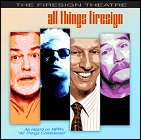 The Eight Shoes reunited once again in 2002 for a series of short radio comedy sketches airing weekly on National Public Radio’s All Things Considered from Independence Day through New Year’s Eve. Phil Proctor, David Ossman, Phil Austin and Peter Bergman revive such cracked classic characters as private detective Nick Danger and the now-retired General Curtis Goatheart to probe the post-9/11 national psyche through every available orifice.
The Eight Shoes reunited once again in 2002 for a series of short radio comedy sketches airing weekly on National Public Radio’s All Things Considered from Independence Day through New Year’s Eve. Phil Proctor, David Ossman, Phil Austin and Peter Bergman revive such cracked classic characters as private detective Nick Danger and the now-retired General Curtis Goatheart to probe the post-9/11 national psyche through every available orifice.
 I’m not your typical Firesign Theatre fan; my friend (and occasional theLogBook.com contributor) Shane Vaughn introduced me to them via 1972’s Dear Friends well over a decade ago, and I was instantly hooked – and then had a slightly hard time realizing that most of the rest of their output simply isn’t in the same vein. Not that it isn’t good, and not that I haven’t learned to love their utterly strange longform projects such as Don’t Crush That Dwarf, Hand Me The Pliers, but to me, the Firesigns were always about Dear Friends. When I saw – long after the fact – that the group was releasing their NPR sketches, I was enthusiastic. This was a return to the short-sketch-comedy style that I had fallen in love with.
I’m not your typical Firesign Theatre fan; my friend (and occasional theLogBook.com contributor) Shane Vaughn introduced me to them via 1972’s Dear Friends well over a decade ago, and I was instantly hooked – and then had a slightly hard time realizing that most of the rest of their output simply isn’t in the same vein. Not that it isn’t good, and not that I haven’t learned to love their utterly strange longform projects such as Don’t Crush That Dwarf, Hand Me The Pliers, but to me, the Firesigns were always about Dear Friends. When I saw – long after the fact – that the group was releasing their NPR sketches, I was enthusiastic. This was a return to the short-sketch-comedy style that I had fallen in love with.
Having heard it now, it must be said that All Things Firesign is uneven. The war on terrorism is ripe for their unique style of comedy – political but not partisan, reveling in the absurdity coming from both ends of the political spectrum without just relentlessly slamming certain public figures – but they seem to miss the mark as often as they hit it, sort of the comedy equivalent of blowing up a cave three weeks after Osama Bin Laden vacated it. There is good stuff here, though: “It’s Saddam Shame!” pokes fun at the fact that terrorist organizations suddenly have media savvy, “TIPs Hotline” gives us a look at America’s Most Wanted as hosted by John Ashcroft instead of John Walsh, “Bob Heeblehauser’s Tacomasaur!” finds an inventive solution to the energy crisis, and perhaps best of all, “No Jokes About America!” aims squarely at that feeling that was still in effect circa 2002 that we had somehow lost the right in this country to crack a smile about anything.
The media itself has always been a rich vein of material for Firesign Theatre, and All Things Firesign is no exception. In a series of sketches, self-proclaimed “prisoner of the 21st century” Hal Stark drones on, Andy Rooney-style, about everything that’s wrong with the modern world, which turns out to mean everything except Hal Stark. Cooking and hunting shows, cryptic Gulf War v1.0-style military press conferences and even those DVD players that’ll censor movies for you all wind up in the Firesigns’ sights.
This CD even features one sketch that NPR quickly turned down. And admittedly, it’s easy to feel your eyebrows raising higher and higher as the Firesigns almost seem to be trying to find something to offend everyone in “Thanksgiving, or Pass The Indian, Please!” – and I was surprised too, because offending everyone isn’t really what the Firesigns are known for. They turn it around with an almost South Park-style twist at the end (and I don’t use the comparison lightly, for I’ve come to regard South Park as perhaps the Firesign Theatre’s only spiritual successor in any medium), but…yeah, you can see where the NPR producers might have been squirming in their seats on this one.
If you can’t handle anything making sport of the present situation, skip All Things Firesign. Those with no sense or humor, and no ability to see that there is at least a little absurdity in every situation, should steer clear. If you’re up for something that does find the absurdity in our soundbite-driven, slogan-ridden modern world, doesn’t slam the military and has a little well-observed fun at the expense of a few high-profile figures on both sides of the war on terror, this is right up your alley.
Oceania – Oceania II
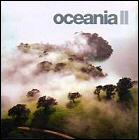 The long-awaited follow-up to 1999’s stellar self-titled album sees Oceania – vocalist Hinewehi Mohi, Killing Joke alumnus Jaz Coleman, and an assortment of other players – staying on course, mixing native Maori instrumentation and poetry with modern musical styles. And if the fact that I can’t seem to stop listening to it is any reliable indicator, this second album is even more compelling than the first.
The long-awaited follow-up to 1999’s stellar self-titled album sees Oceania – vocalist Hinewehi Mohi, Killing Joke alumnus Jaz Coleman, and an assortment of other players – staying on course, mixing native Maori instrumentation and poetry with modern musical styles. And if the fact that I can’t seem to stop listening to it is any reliable indicator, this second album is even more compelling than the first.
Oceania II features wistful, emotional numbers such as Hawaiki, Niniwa and Kurupana, and hypnotically ethereal club tunes such as Rongo and Tauararai (the latter two of which are possibly my two favorite songs on the whole album). There’s a rather experimental number, Akonga, in which Hinewehi Mohi trades off verses with a recording of her great uncle which dates back over 30 years. Some of the shorter tracks are instrumental interludes with more traditional instruments; many of the full-length songs, however, have a decidedly modern feel to them.
 As mentioned before, Tauararai and Rongo are highlights of the album, along with the soaring coda “Mana”. Unlike the first album, there’s no booklet of helpful Maori-to-English translations; you’re on your own in interpreting the lyrics. If you don’t speak a word of Maori, you’re still in for a treat – you can focus fully on the gorgeous vocals and the relaxing feel of the whole thing. Very, very highly recommended.
As mentioned before, Tauararai and Rongo are highlights of the album, along with the soaring coda “Mana”. Unlike the first album, there’s no booklet of helpful Maori-to-English translations; you’re on your own in interpreting the lyrics. If you don’t speak a word of Maori, you’re still in for a treat – you can focus fully on the gorgeous vocals and the relaxing feel of the whole thing. Very, very highly recommended.
- Koauau Pongaihu & Ku (0:40)
- Hawaiki (4:40)
- Akonga (5:36)
- Kurupana (4:14)
- Nguru (0:56)
- Tuhira (4:22)
- Niniwa (4:40)
- Taurarai (6:26)
- Hue Puruhau (0:42)
- Rongo (3:44)
- Pukaea (0:20)
- Haka (1:51)
- Pukaea (0:24)
- Mana (4:55)
- Koauau Pongaihu & Ku (1:43)
Released by: Toi Iho
Release date: 2002
Total running time: 45:13
Dave Edmunds – Riff Raff / I Hear You Rockin’
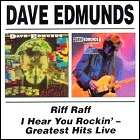 For the follow-up to 1983’s reasonably successful Information, rocker Dave Edmunds turned once again to Jeff Lynne not just for production help, but for the ELO frontman’s unique songwriting style. The result was Riff Raff, a 1984 album which further pushed Edmunds into a more modern style. Kicking off with a Lynne-produced cover of the Four Tops’ “Something About You”, Riff Raff is a bit of a mish-mash, veering back and forth between different songwriters (Edmunds himself only penned one song, while Lynne wrote and produced “Breaking Out”, “S.O.S.” and “Far Away”). Somewhat surprisingly, with Edmunds producing the tracks that Lynne didn’t produce, the “sound” is fairly consistent from song to song. Within that context, though, Lynne’s songs fare the best, again sounding very Secret Messages-era due in no small part to the presence of keyboardist Richard Tandy, with “S.O.S.” being the best of the three.
For the follow-up to 1983’s reasonably successful Information, rocker Dave Edmunds turned once again to Jeff Lynne not just for production help, but for the ELO frontman’s unique songwriting style. The result was Riff Raff, a 1984 album which further pushed Edmunds into a more modern style. Kicking off with a Lynne-produced cover of the Four Tops’ “Something About You”, Riff Raff is a bit of a mish-mash, veering back and forth between different songwriters (Edmunds himself only penned one song, while Lynne wrote and produced “Breaking Out”, “S.O.S.” and “Far Away”). Somewhat surprisingly, with Edmunds producing the tracks that Lynne didn’t produce, the “sound” is fairly consistent from song to song. Within that context, though, Lynne’s songs fare the best, again sounding very Secret Messages-era due in no small part to the presence of keyboardist Richard Tandy, with “S.O.S.” being the best of the three.
This budget-priced release also contains – thanks to the almost unthinkably short running times of some LPs in the heyday of records – the 1987 live album I Hear You Rockin’: The Hits – Live. All things considered, this live recording may be a better representation of Dave Edmunds’ sound as he rocks out chestnuts from his own catalog (from “I Hear You Knockin'” to “Slipping Away” for an appreciative crowd, with his band expertly reproducing the sound of the studio recordings. He also covers plenty of numbers from “Queen Of Hearts” to “The Wanderer”.
 All in all, a nifty double-shot of vintage Edmunds; Riff Raff didn’t quite manage to be as acclaimed an album as Information did, despite the effort to revisit so much of what made Information a success, but the inclusion of the live album sweetens the pot enough to make this a solid three-star CD.
All in all, a nifty double-shot of vintage Edmunds; Riff Raff didn’t quite manage to be as acclaimed an album as Information did, despite the effort to revisit so much of what made Information a success, but the inclusion of the live album sweetens the pot enough to make this a solid three-star CD.
- Something About You (3:03)
- Breaking Out (3:26)
- Busted Loose (4:33)
- Far Away (4:11)
- Rules Of The Game (4:10)
- Steel Claw (4:18)
- S.O.S. (3:14)
- Hang On (3:24)
- How Could I Be So Wrong (3:20)
- Can’t Get Enough (3:08)
- Girls Talk (3:21)
- Here Comes The Weekend (2:10)
- Queen Of Hearts (3:04)
- Paralyzed (2:53)
- The Wanderer (3:01)
- Crawling From The Wreckage (3:11)
- Slipping Away (4:30)
- Information (3:59)
- I Hear You Knocking (2:38)
- I Knew The Bride (2:52)
- Ju Ju Man (3:20)
Released by: BGO Records
Release date: 2002 (compilation) / 1984 (Riff Raff) / 1987 (I Hear You Rockin’)
Total running time: 71:46
The Best Of Spandau Ballet
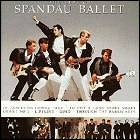 I’m a sucker for just about anything 80s, so when I happened upon The Best Of Spandau Ballet, I was intrigued – like most casual listeners, I could really only think of “True” and, at a stretch, “Gold” as being recognizable songs for this group. I liked their sound (though, truthfully, True was overplayed to death in its day), but it’s rather like the Romantics’ best of album – aside from one of two songs that everyone knows, what else would be on here?
I’m a sucker for just about anything 80s, so when I happened upon The Best Of Spandau Ballet, I was intrigued – like most casual listeners, I could really only think of “True” and, at a stretch, “Gold” as being recognizable songs for this group. I liked their sound (though, truthfully, True was overplayed to death in its day), but it’s rather like the Romantics’ best of album – aside from one of two songs that everyone knows, what else would be on here?
As it turned out, I recognized one of the band’s earliest songs, though I couldn’t tell you where I’d heard it before. The early sound of Spandau Ballet is quite a revelation – a little more soulful than Level 42 and a lot more soulful than Depeche Mode, the group’s original sound was very much in the new romantic mold – very different, and quite a bit funkier, than you’d imagine from only having heard “True”. There’s also a disco influence evident on their early tracks, and some of them don’t quite stand the test of time – “Musclebound”, for example, I actually found a bit trite.
“True” and “Gold” are pretty much as I remember them, though listening to the album in one concentrated sitting, it’s interesting to hear tracks from late in the band’s career where it seems obvious that they were trying to recapture the vibe of “True” – similarities in song structure, vocal style and reliance on the group’s relatively unique in-house sax player abound. After a while, the last vestiges of Spandau Ballet’s original new wave leanings are no longer evident. A bit sad, really – after listening to this album’s represenative cross-section of the group’s career, I found myself more intrigued with their earlier tracks than their attempts to reinvent themselves as smooth, soulful crooners.
 Still, let’s give credit where it’s due – obviously, at some point, a hell of a lot of people did listen to Spandau Ballet, even if only for just one of two songs. A lot of the credit really goes to Tony Hadley’s deep baritone voice. The voice, and the then-uncommon sax, were really the group’s trademark, and having heard Hadley on a latter-day Alan Parsons song, just the voice alone is enough to summon forth memories of Spandau Ballet. I recommend giving this one a listen just to see what the guys did other than “True”. You might be pleasantly surprised.
Still, let’s give credit where it’s due – obviously, at some point, a hell of a lot of people did listen to Spandau Ballet, even if only for just one of two songs. A lot of the credit really goes to Tony Hadley’s deep baritone voice. The voice, and the then-uncommon sax, were really the group’s trademark, and having heard Hadley on a latter-day Alan Parsons song, just the voice alone is enough to summon forth memories of Spandau Ballet. I recommend giving this one a listen just to see what the guys did other than “True”. You might be pleasantly surprised.
- To Cut A Long Story Short (3:23)
- The Freeze (3:33)
- Musclebound (3:56)
- Chant No. 1 (I Don’t Need This Pressure On) (4:06)
- Paint Me Down (3:14)
- Instinction (3:35)
- Lifeline (3:21)
- Communication (3:27)
- True (5:34)
- Gold (3:53)
- Only When You Leave (4:49)
- I’ll Fly For You (5:12)
- Highly Strung (4:12)
- Round And Round (4:34)
- Fight For Ourselves (4:24)
- Through The Barricades (2:29)
- How Many Lies (4:36)
- Be Free With Your Love (3:28)
Released by: Chrysalis
Release date: 1994
Total running time: 71:52
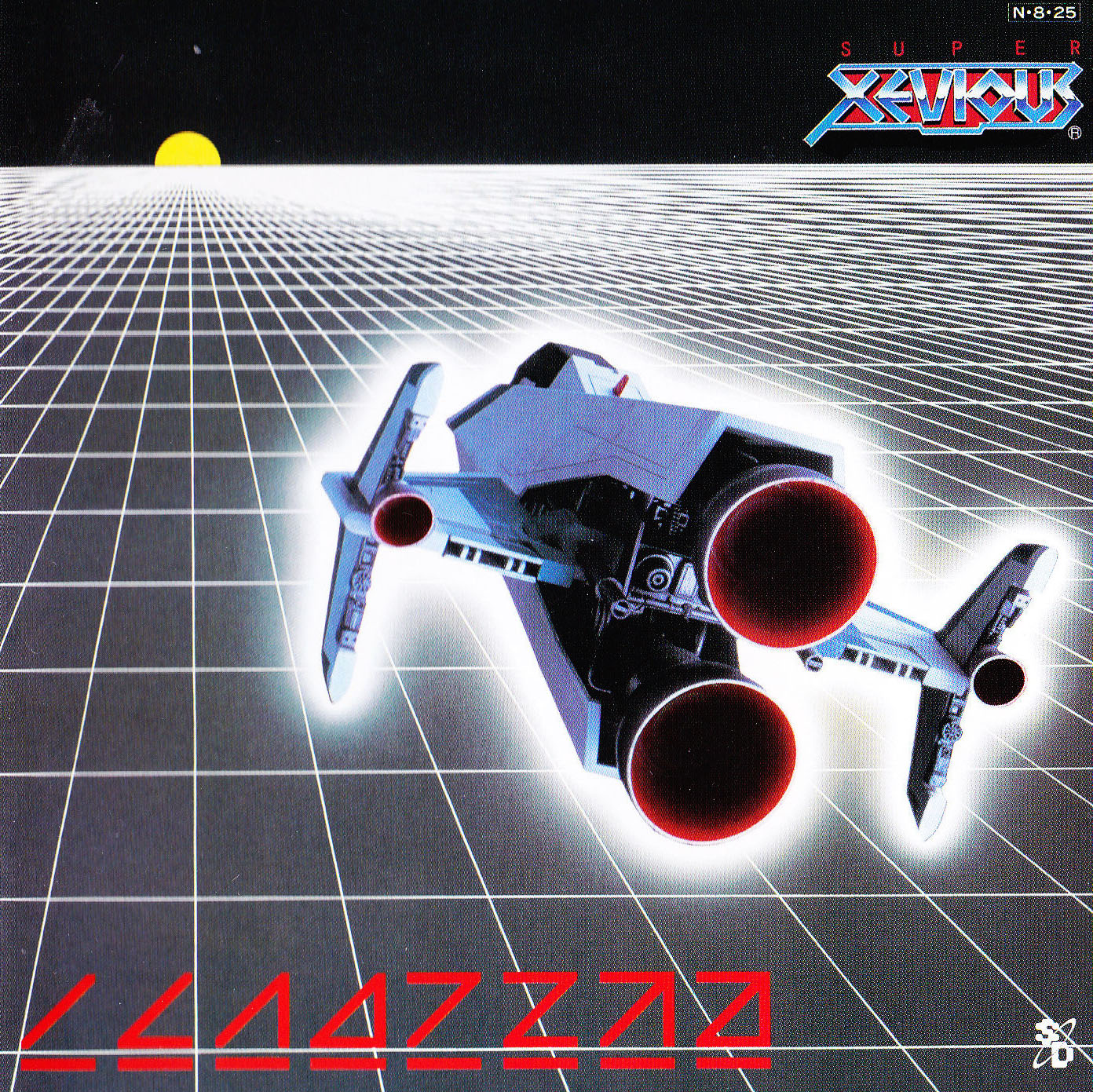
Super Xevious – video game remixes by Haruomi Hosono
Video game music legend Haruomi Hosono turns his remixing talents to some of Namco’s classics with this EP-length CD single. Curiously tagged Super Xevious, this remix CD essentially revolves around the music that game shared with its predecessor, Xevious. Hosono stretches the game’s few signature tunes out to a whopping eight minute remix; as you might expect, there’s quite a bit of musical repetition, but the music evolves by the layers of rhythm and other elements Hosono piles on top. A somewhat shorter remix of Hosono’s remix is included as the last track.
The track of music from Gaplus is essentially a layered reworking of the third-level music from that game; nothing is really changed from the original game music, but again, elements are added over the top  of it. A very brief track of music from Tower Of Druaga is also included, though even at its short length, this track doesn’t exactly invite repeat listening.
of it. A very brief track of music from Tower Of Druaga is also included, though even at its short length, this track doesn’t exactly invite repeat listening.
Perhaps a bit pricey for its meager running time, Super Xevious does include some interesting remix material that is, for the most part, a fun listen for fans of the 80s arcade classics.
- Super Xevious (8:51)
- Gaplus (5:20)
- The Tower of Druaga (1:47)
- Super Xevious – Gust Notch Mix (3:46)
Released by: Scitron Digital
Release date: 2001
Total running time: 19:47

